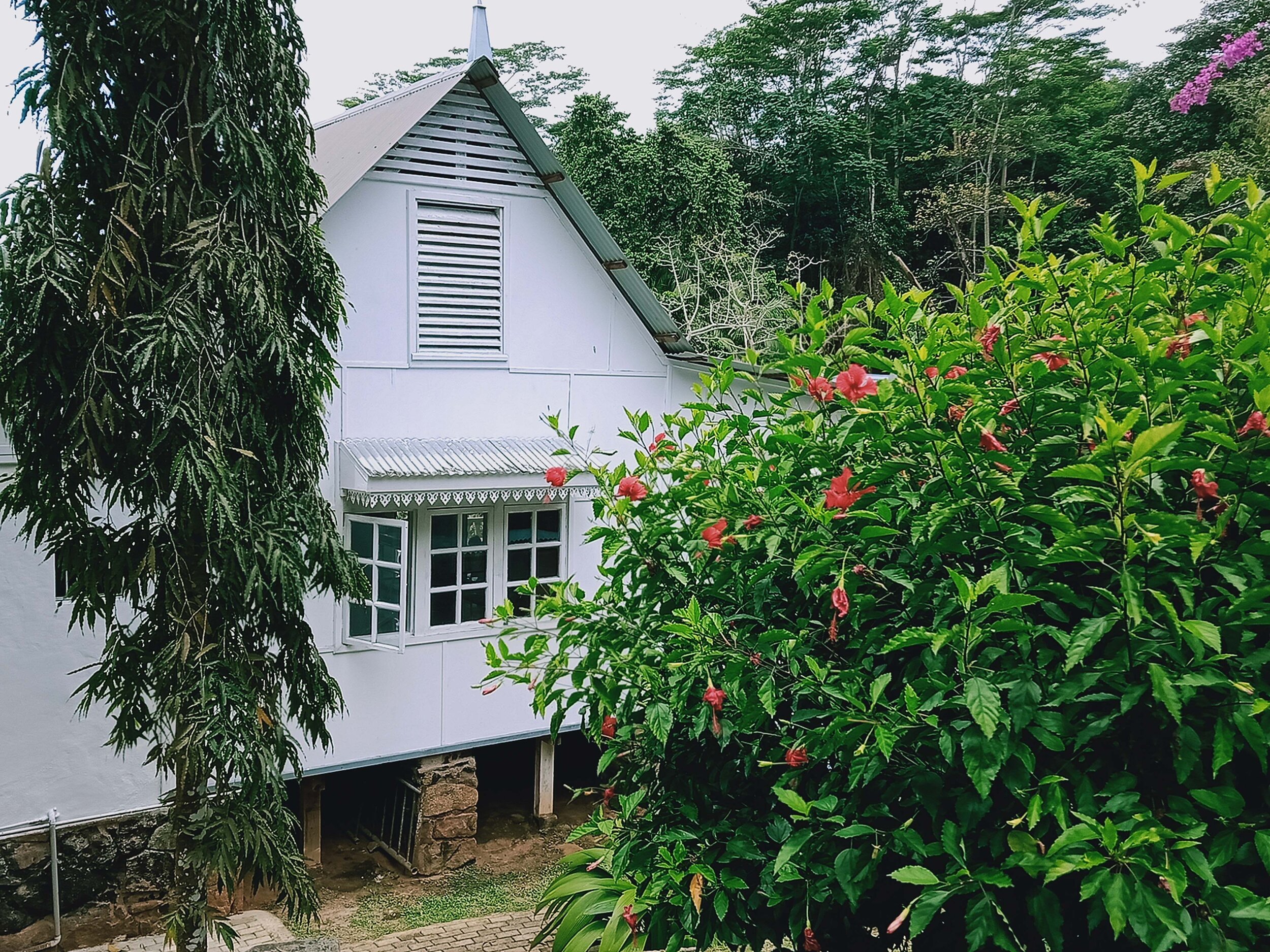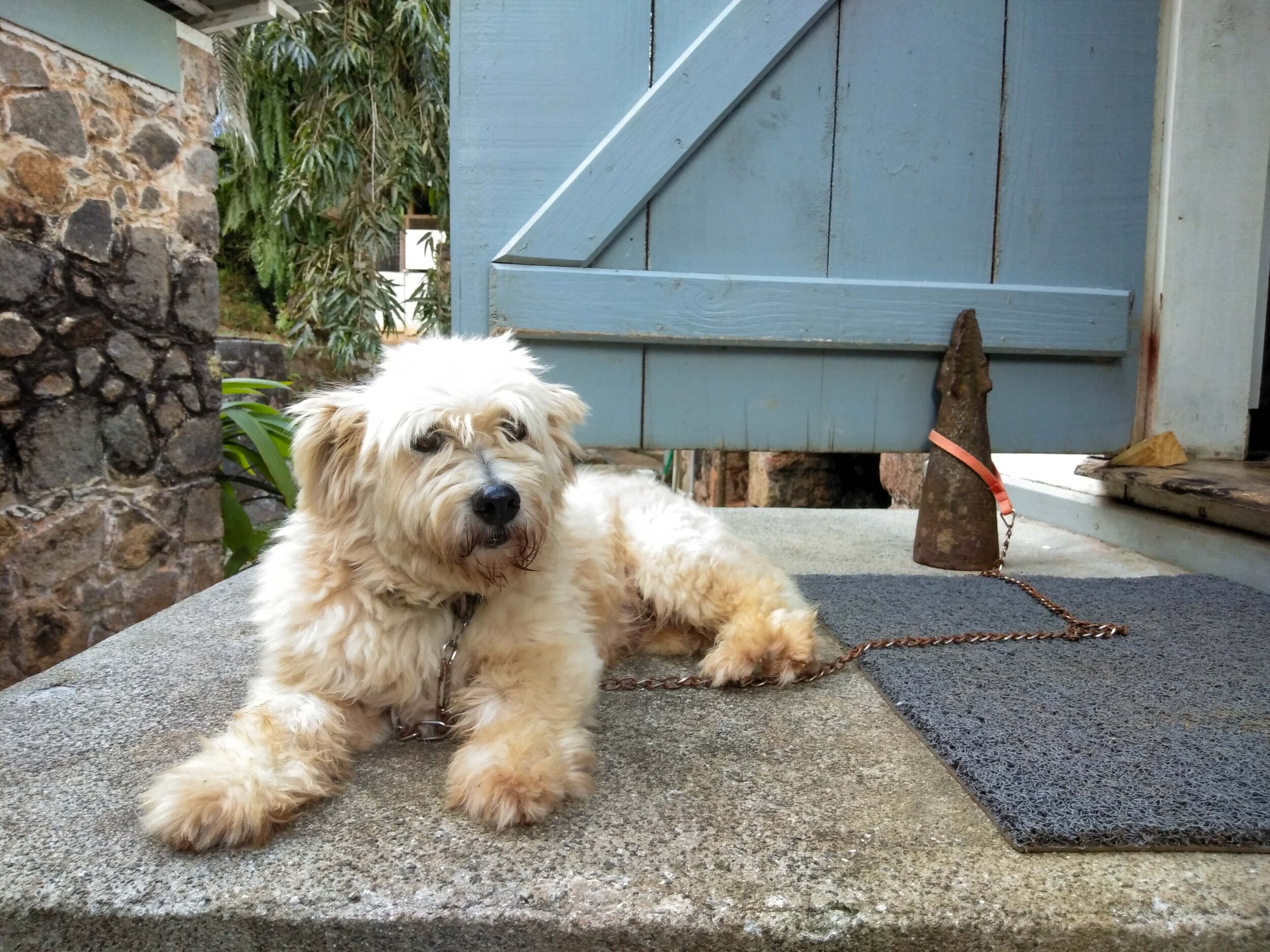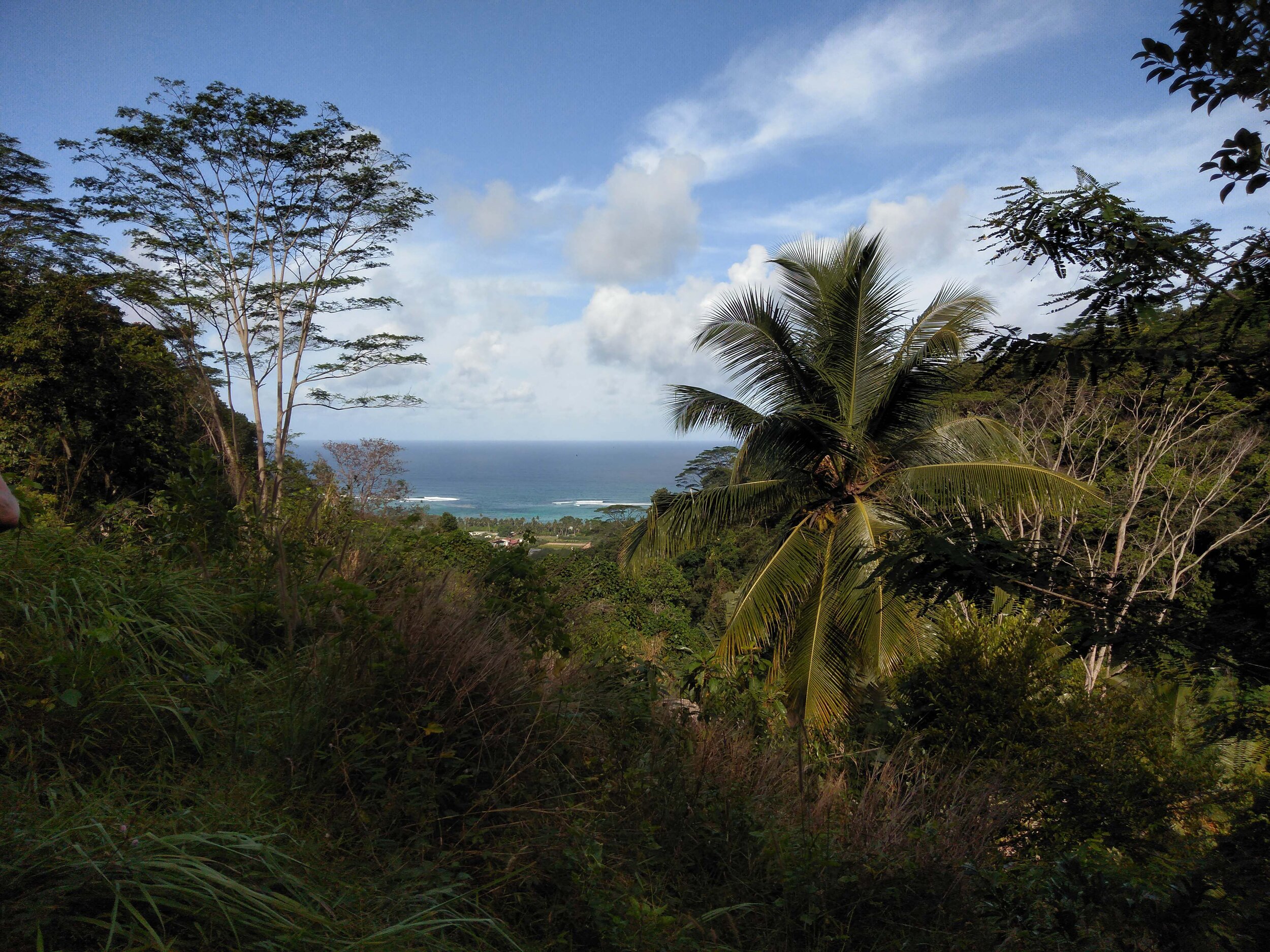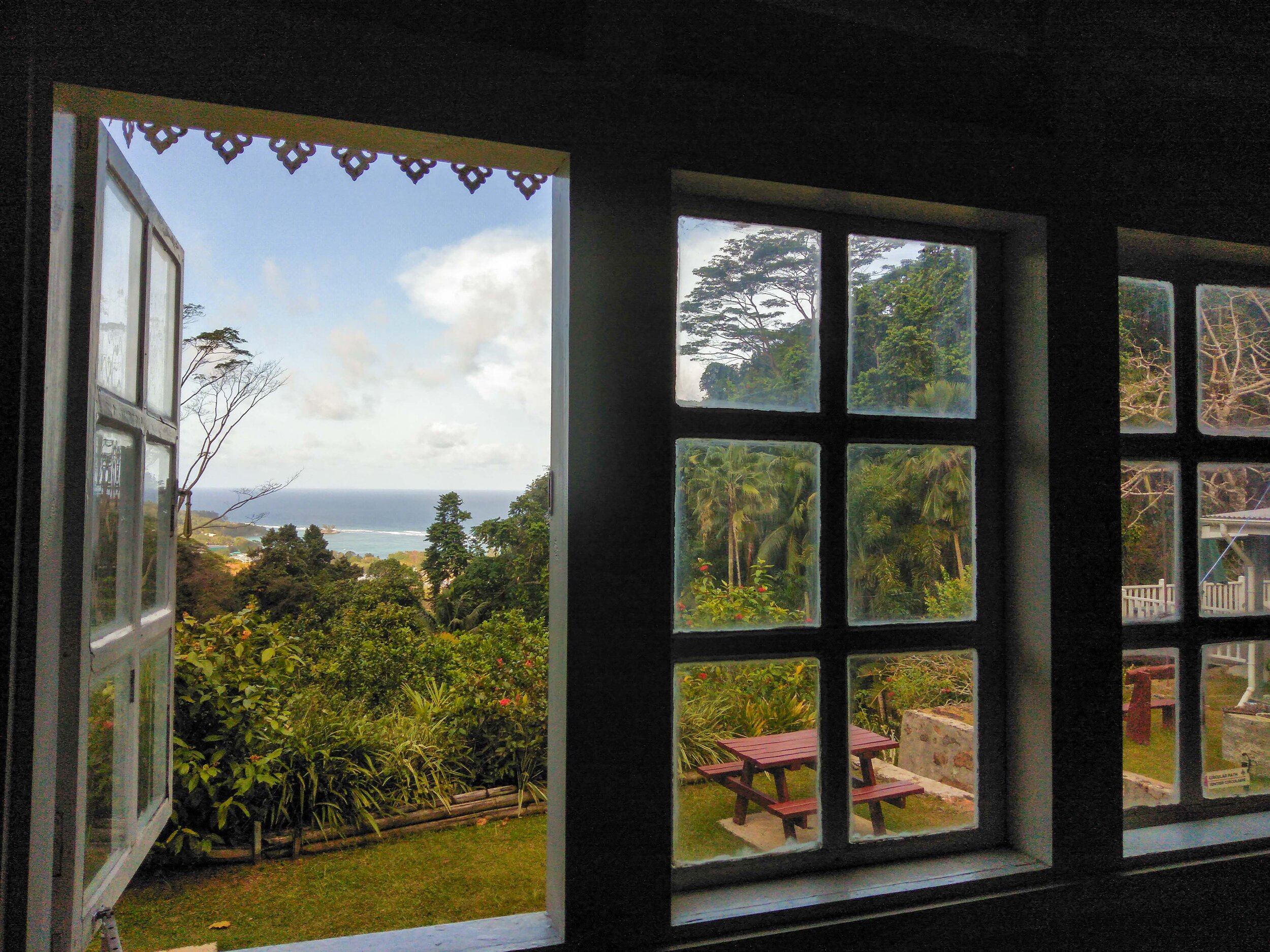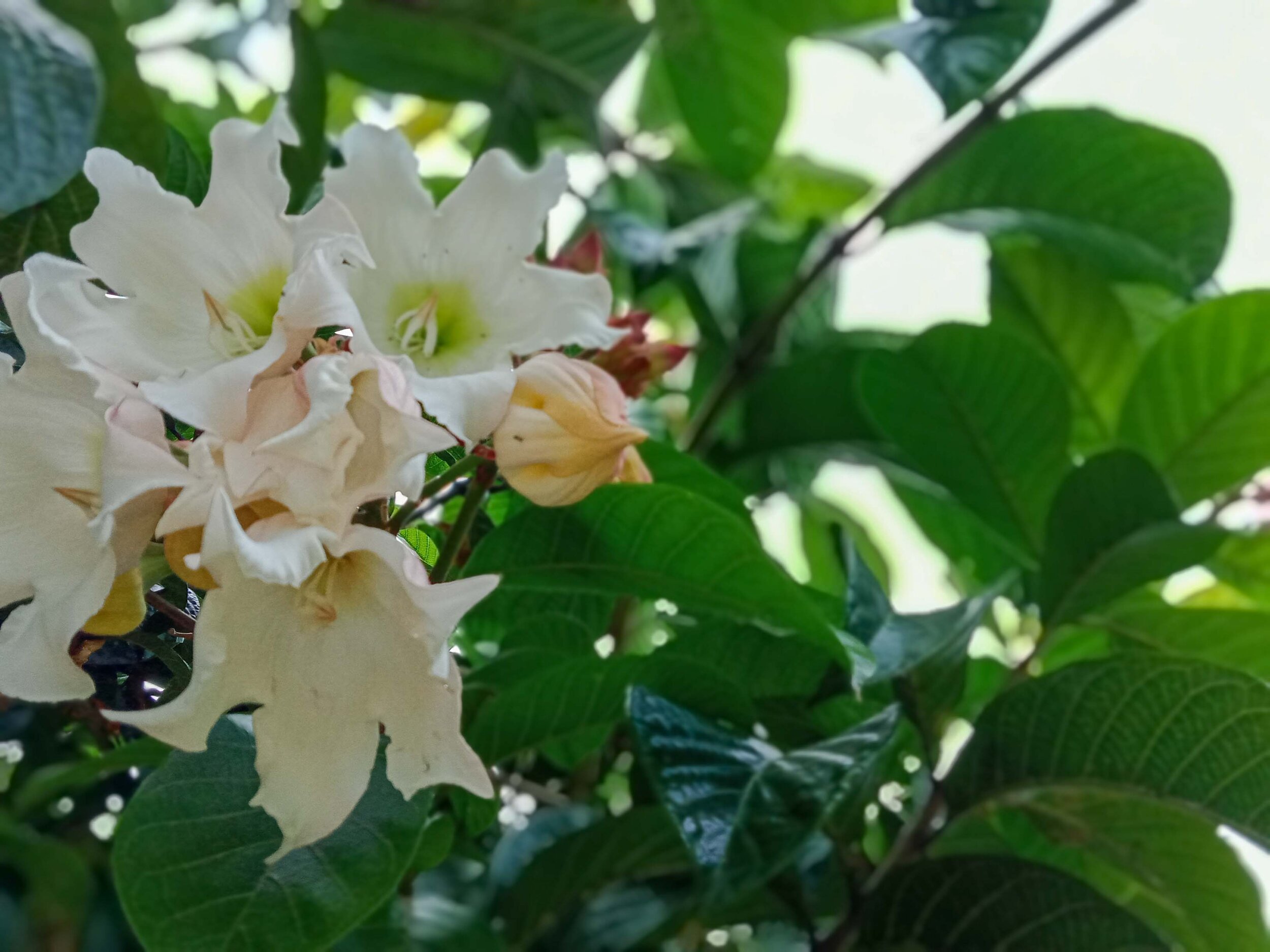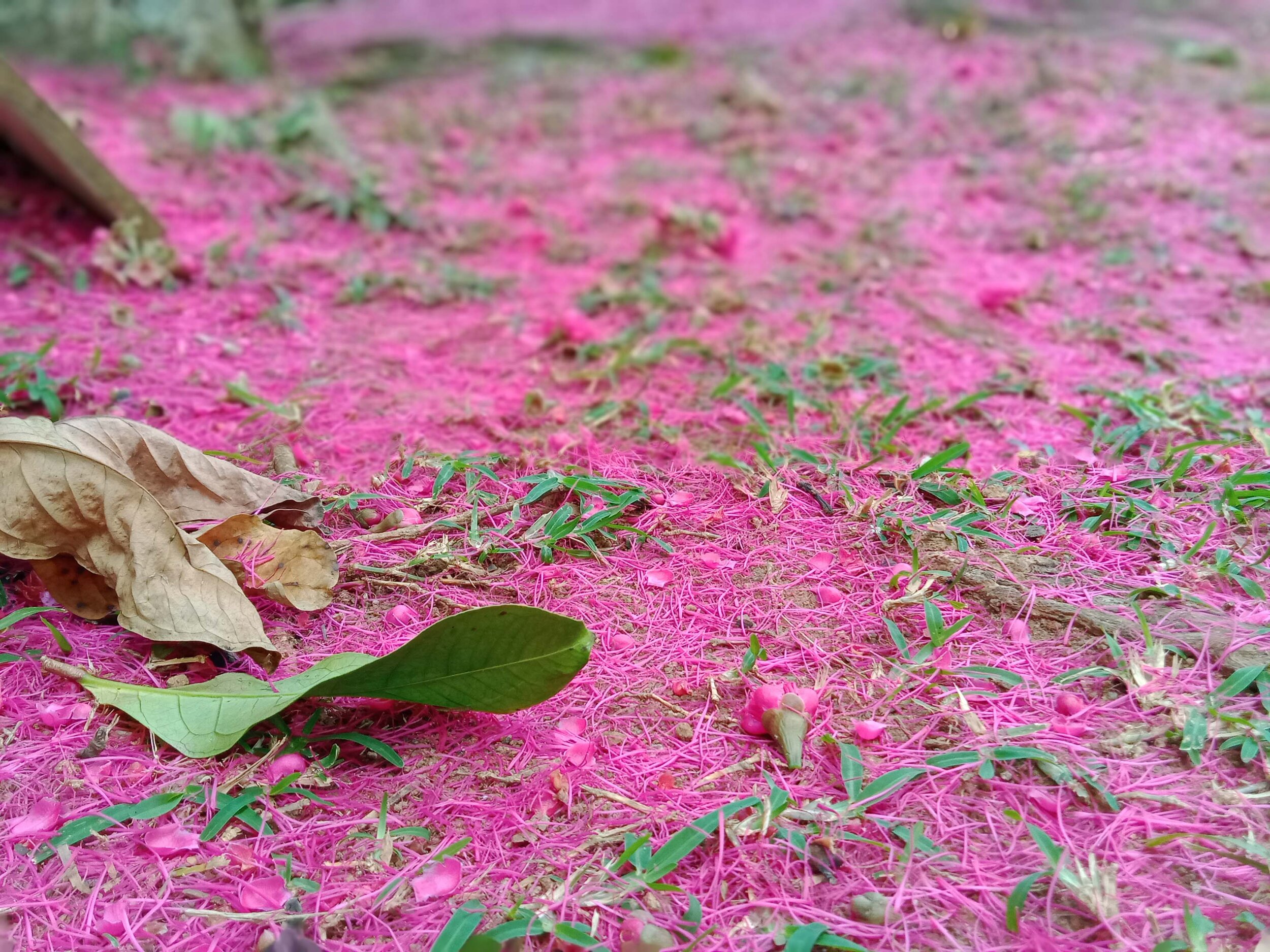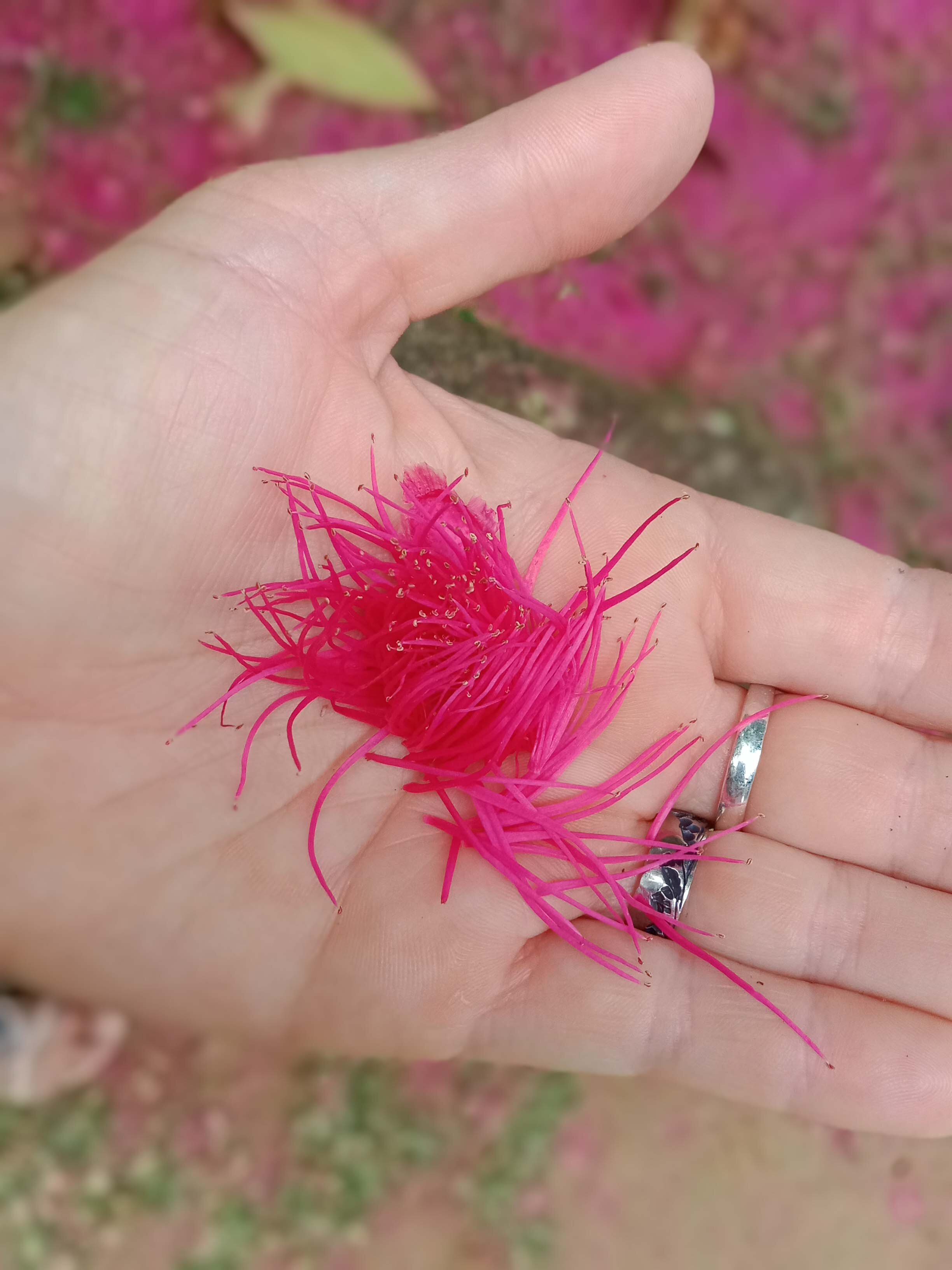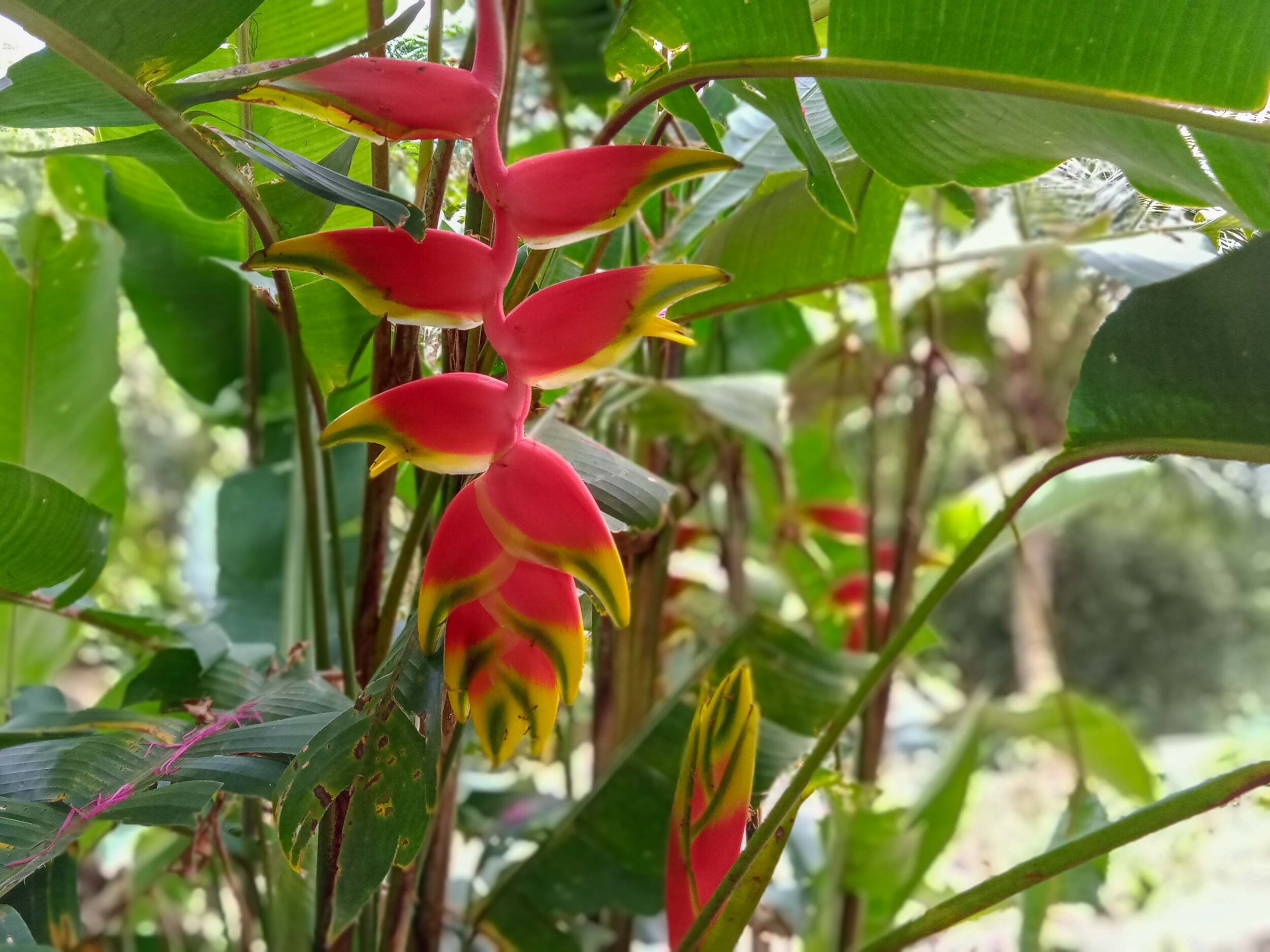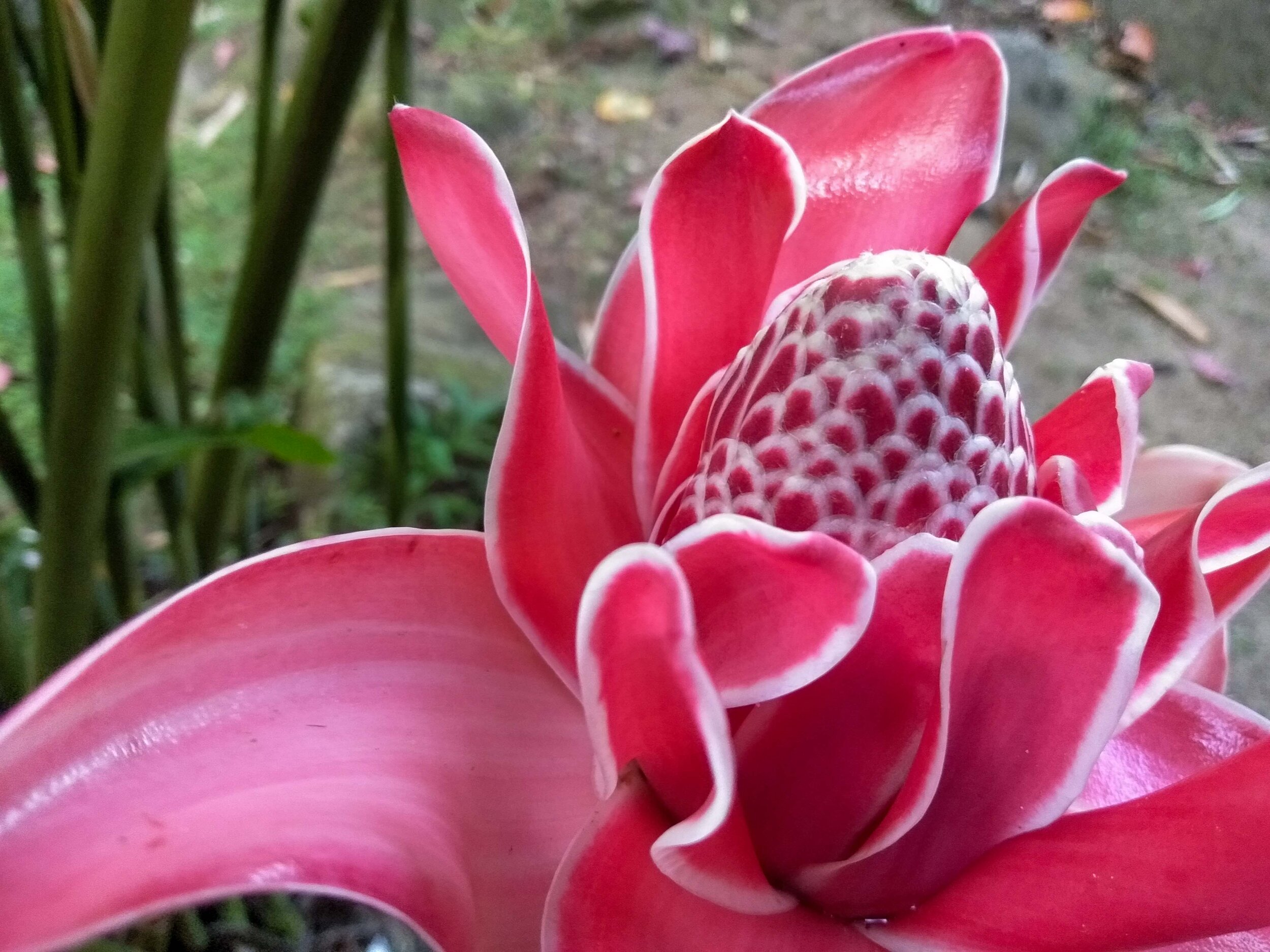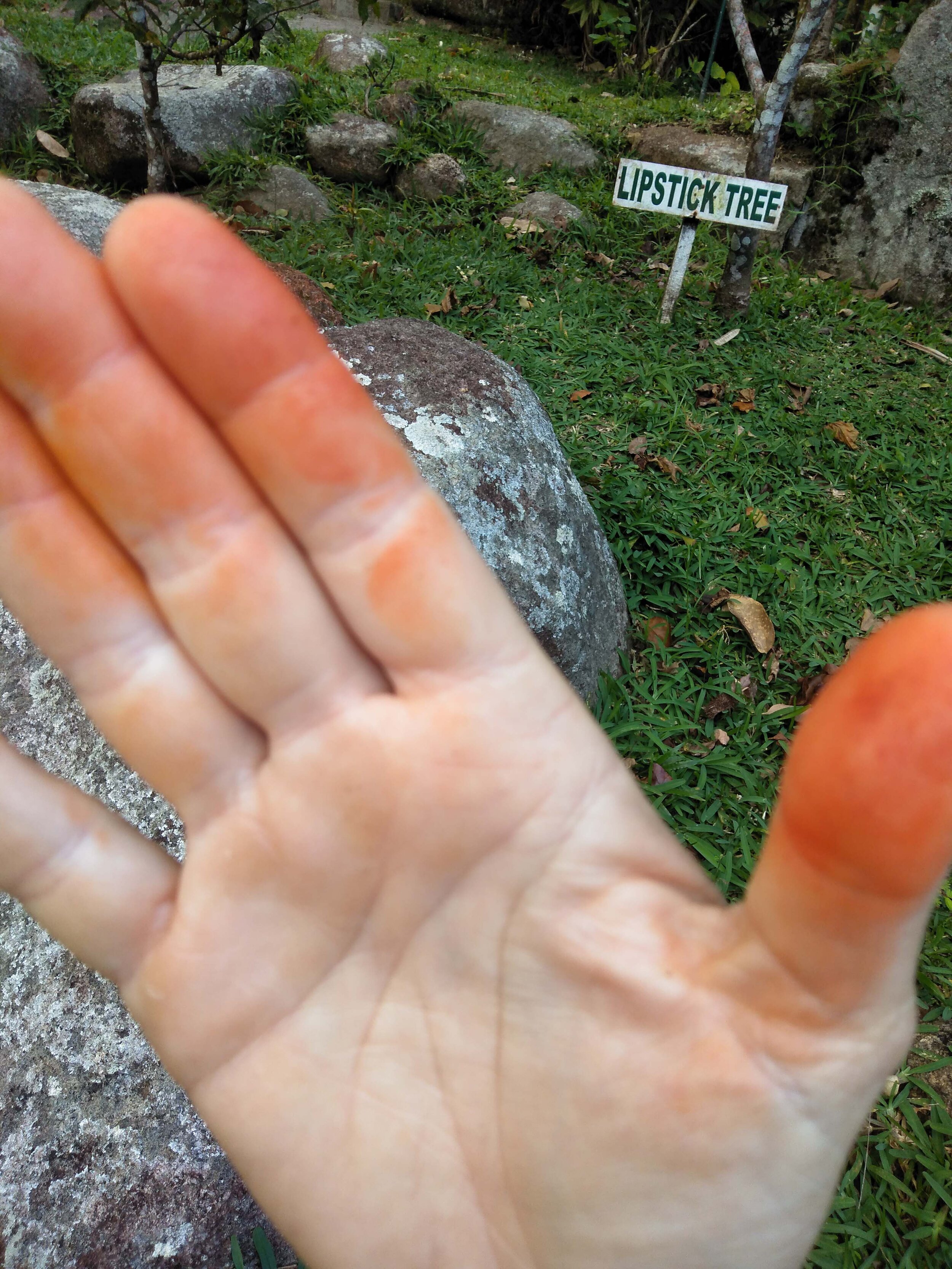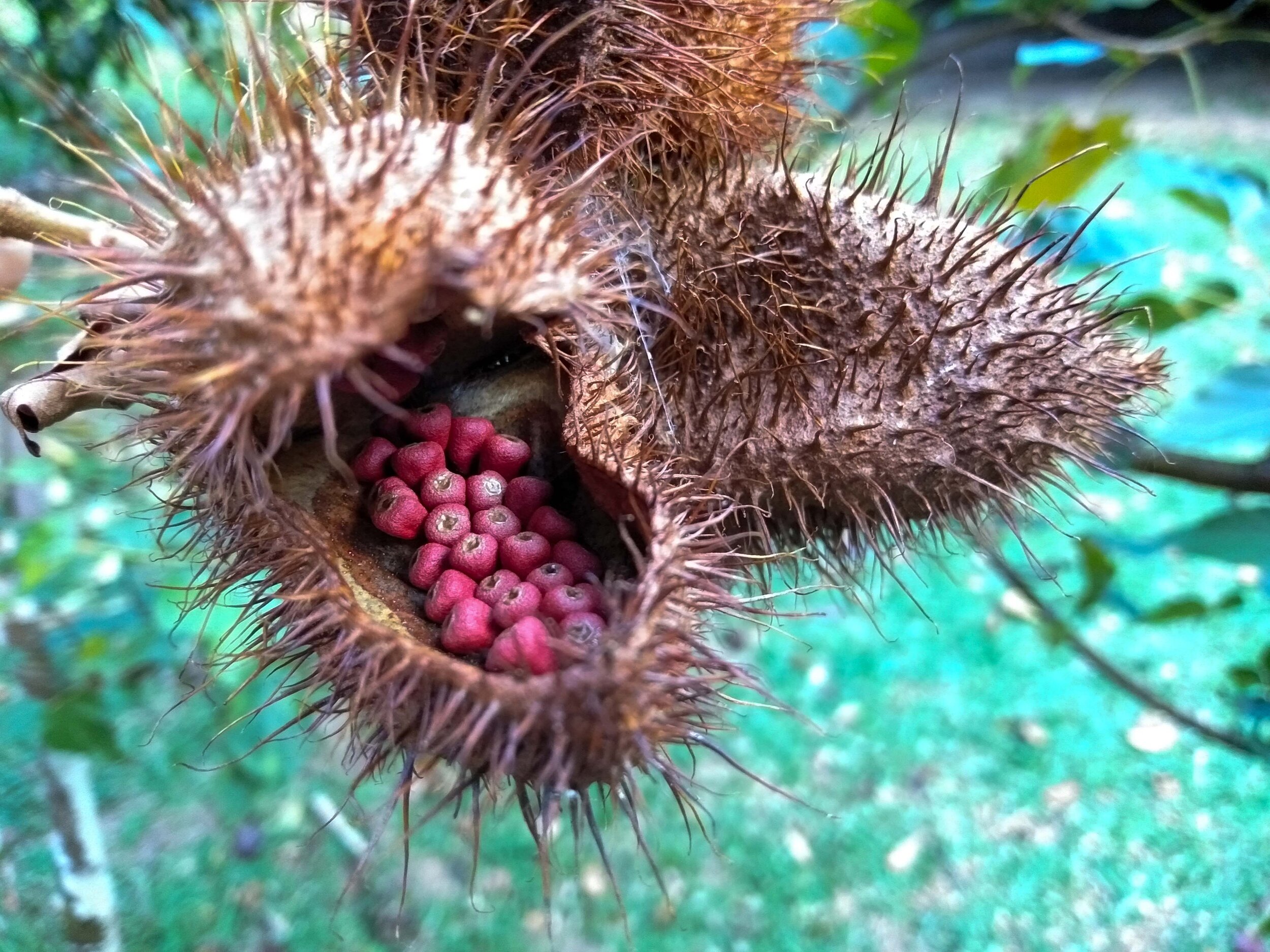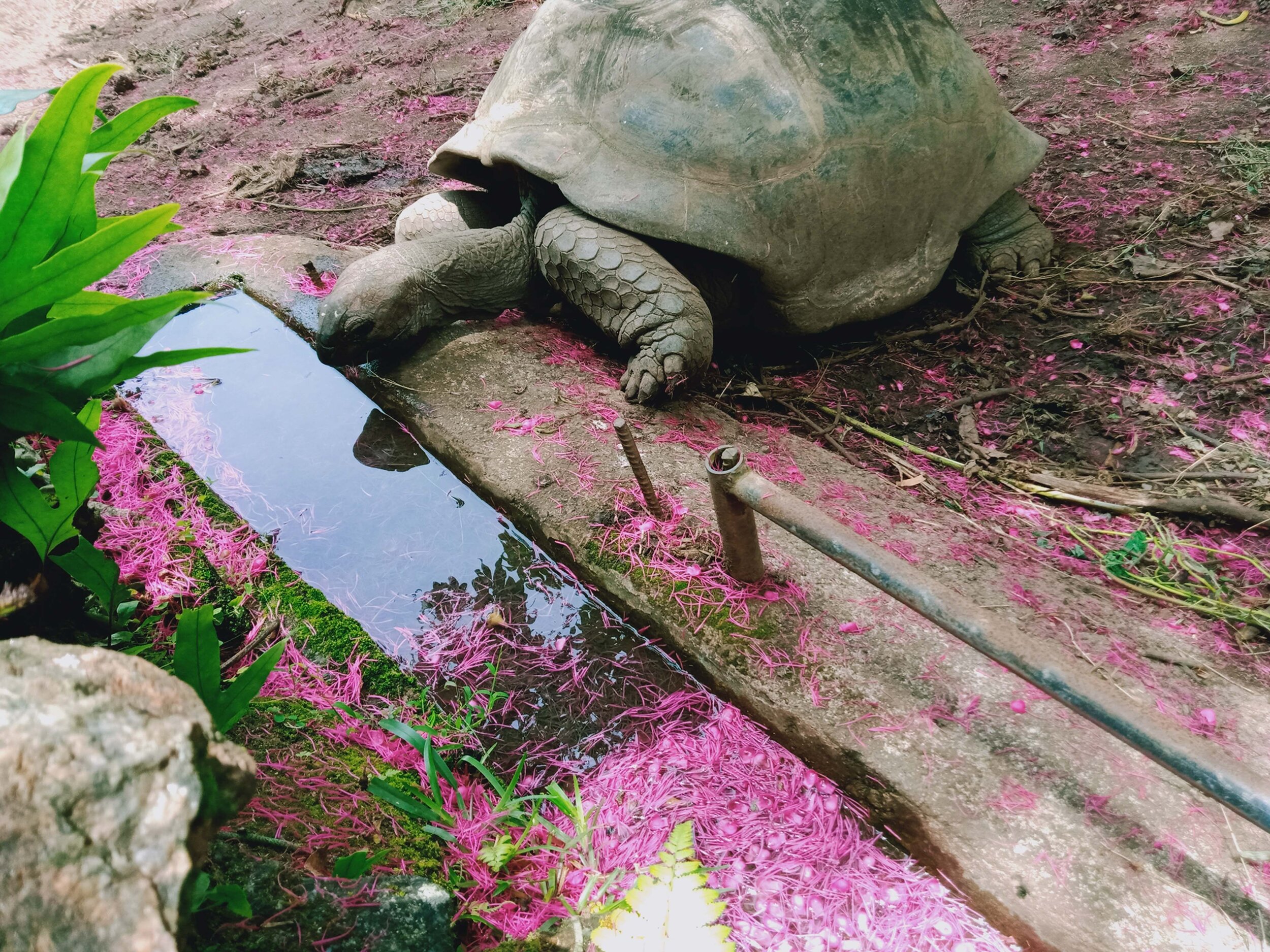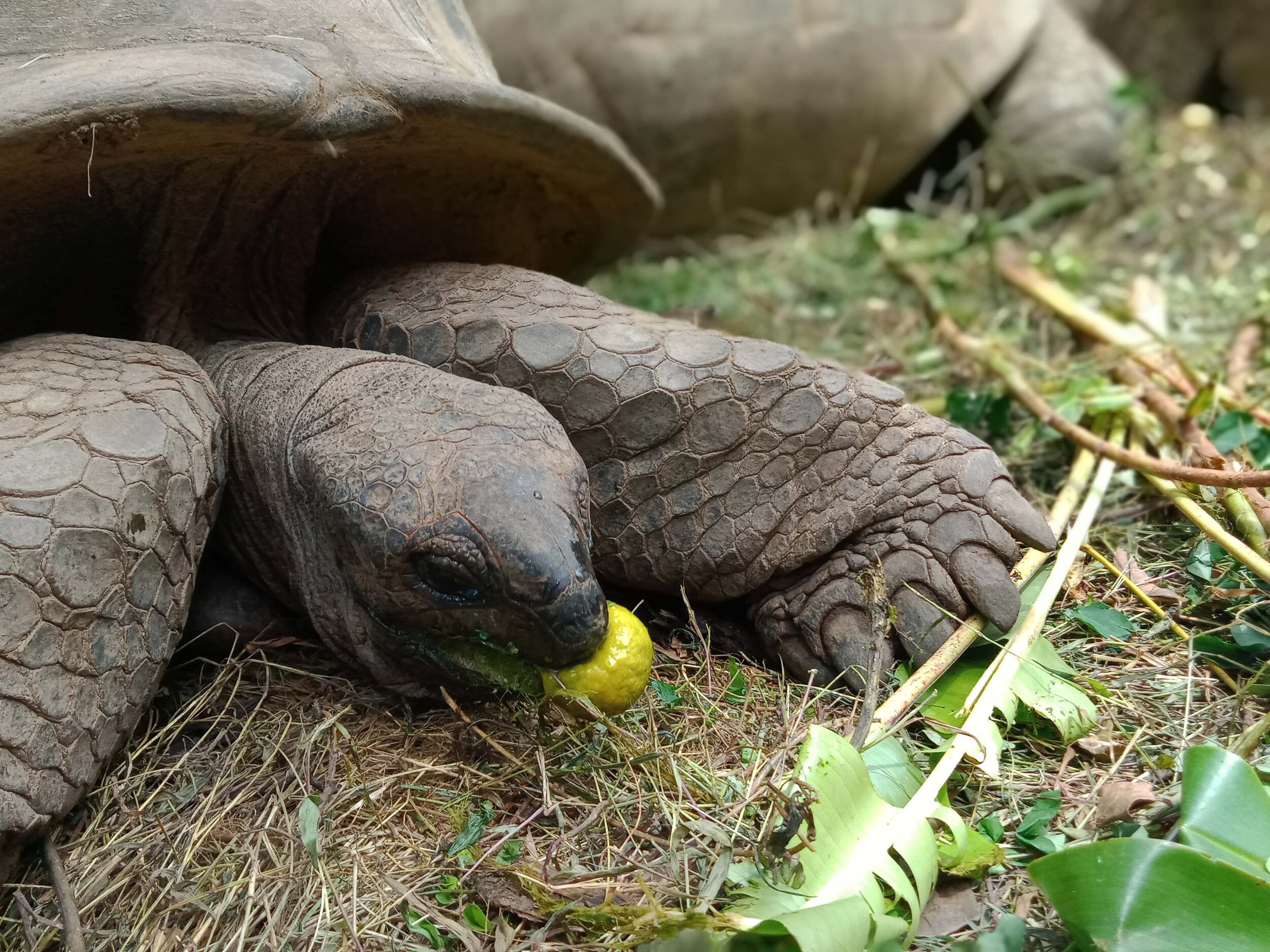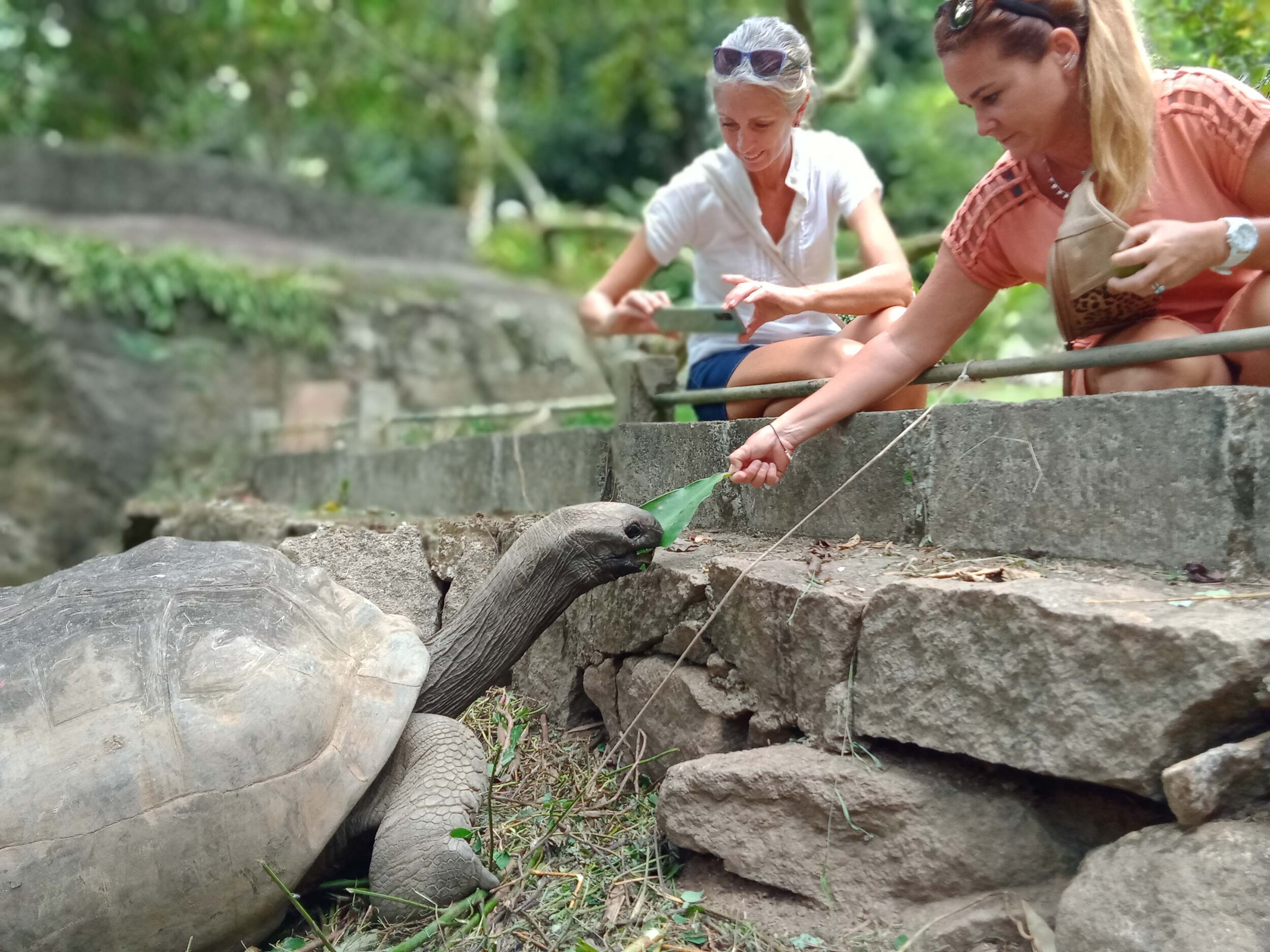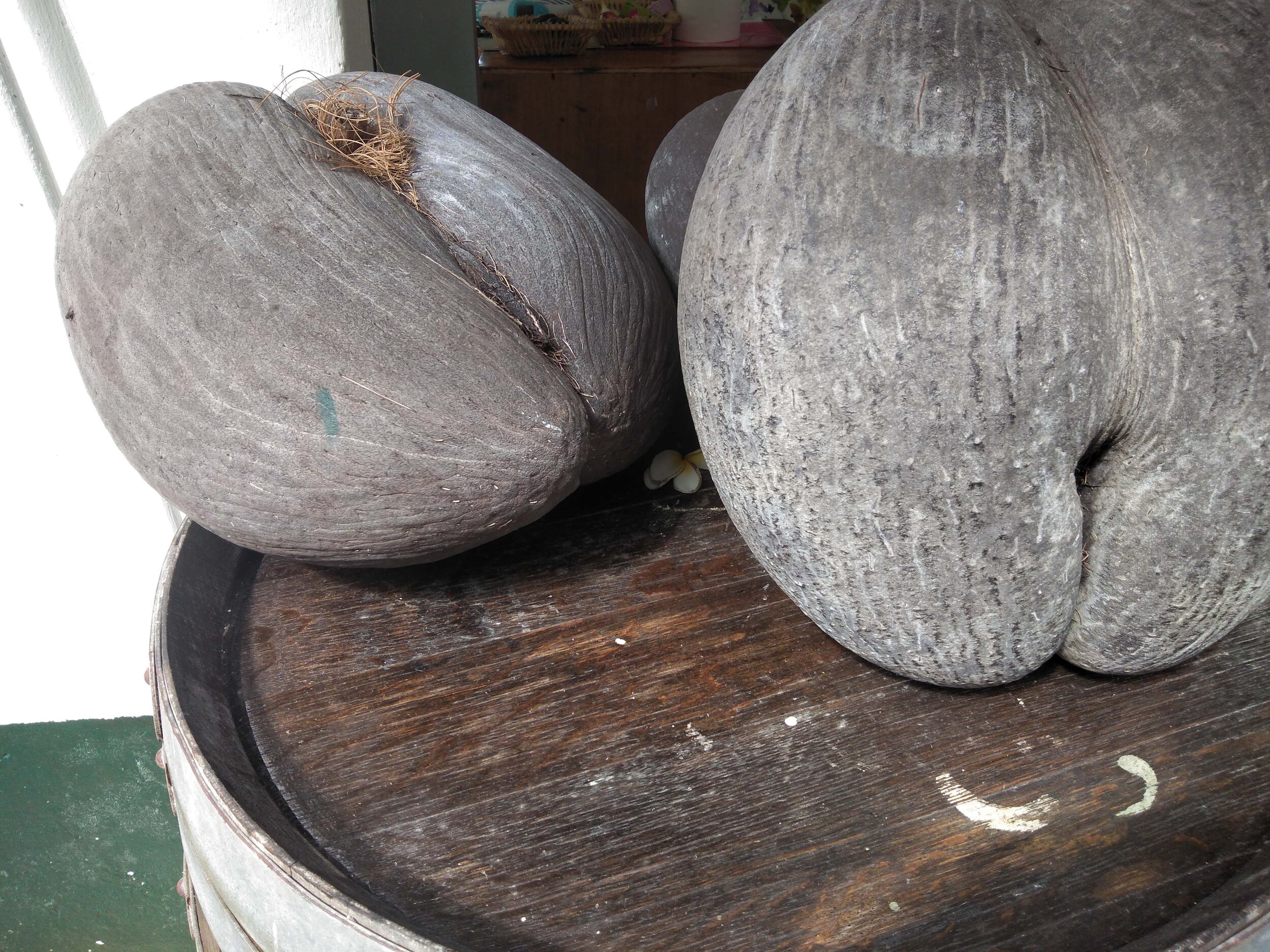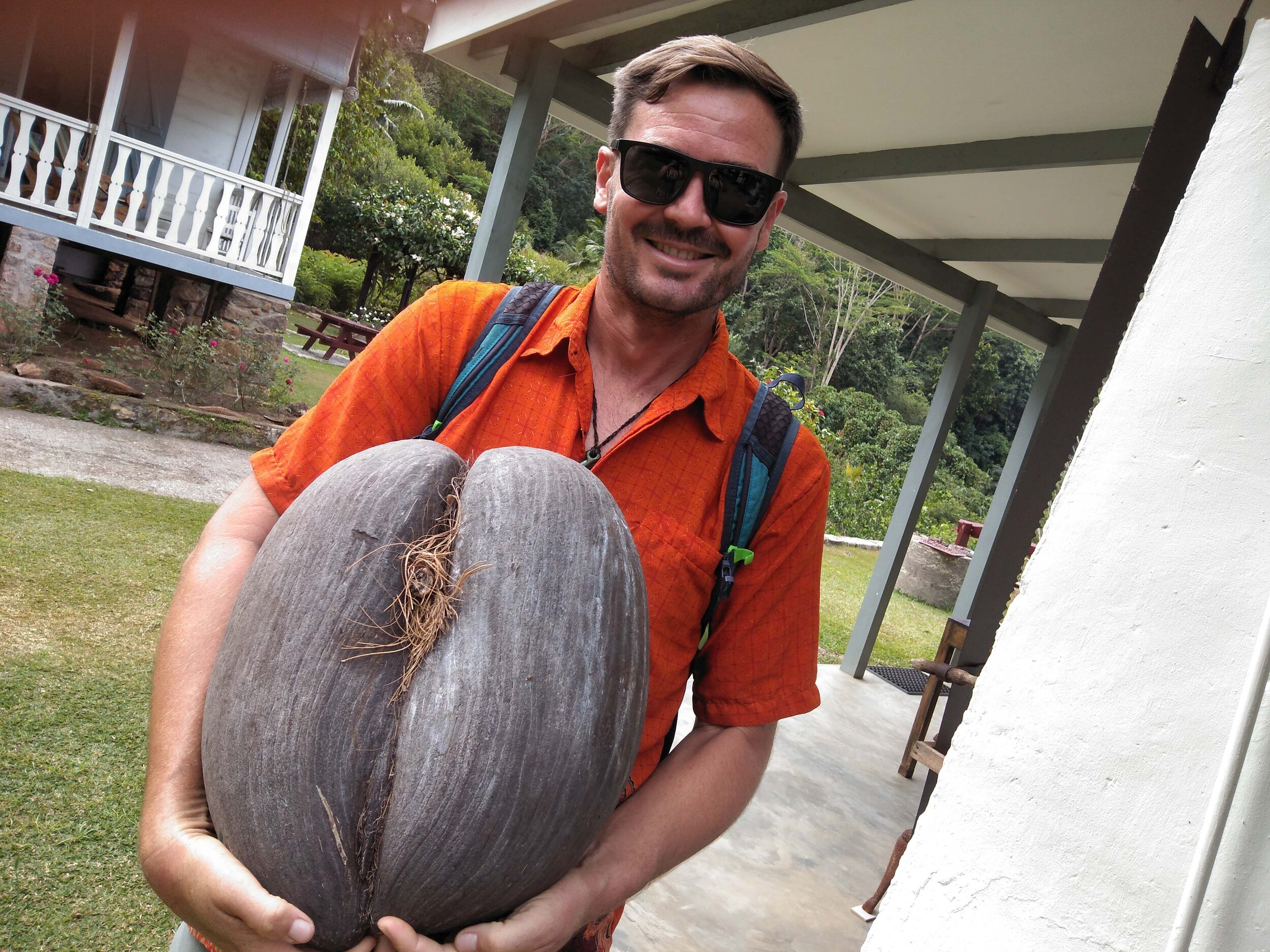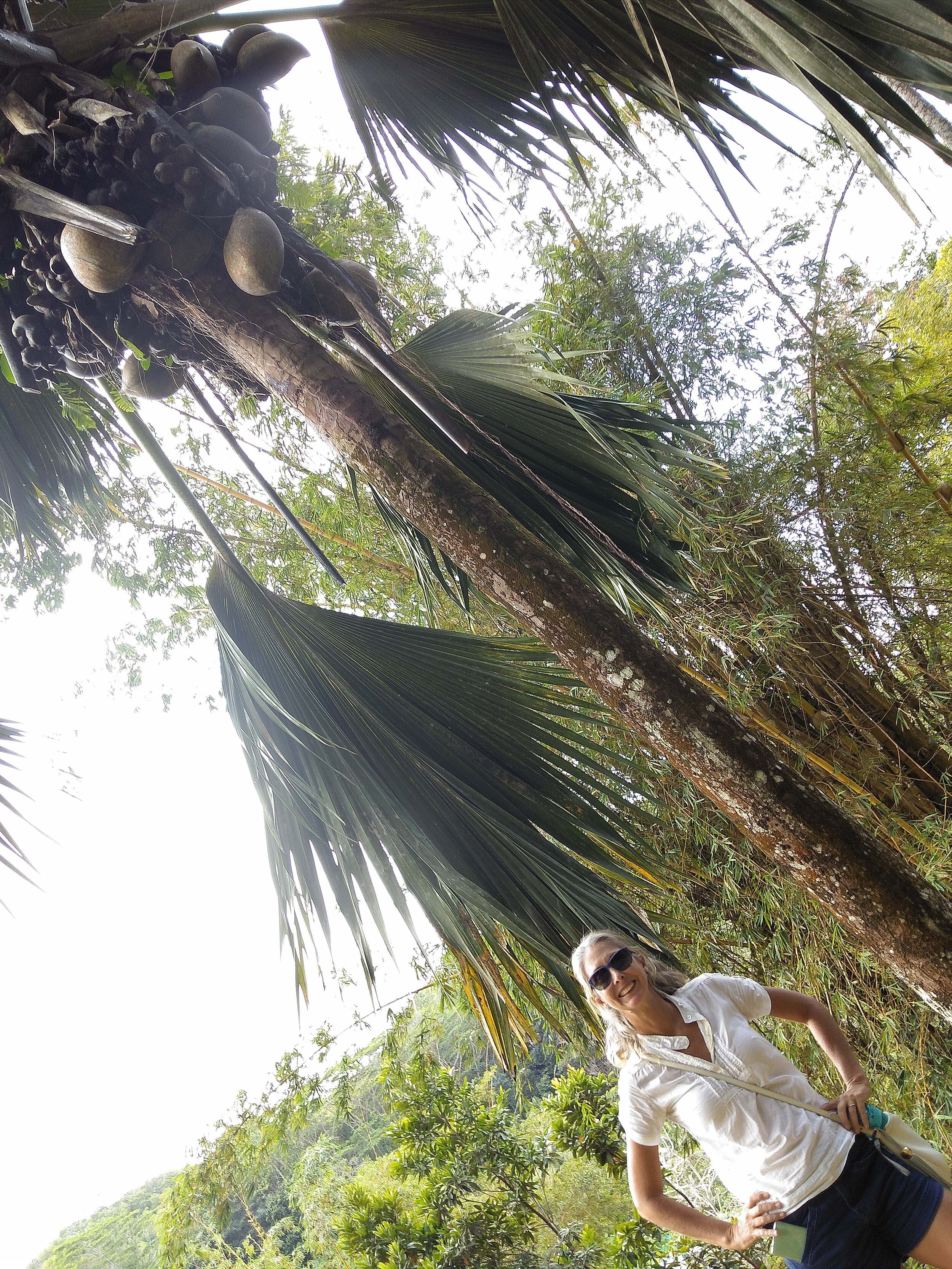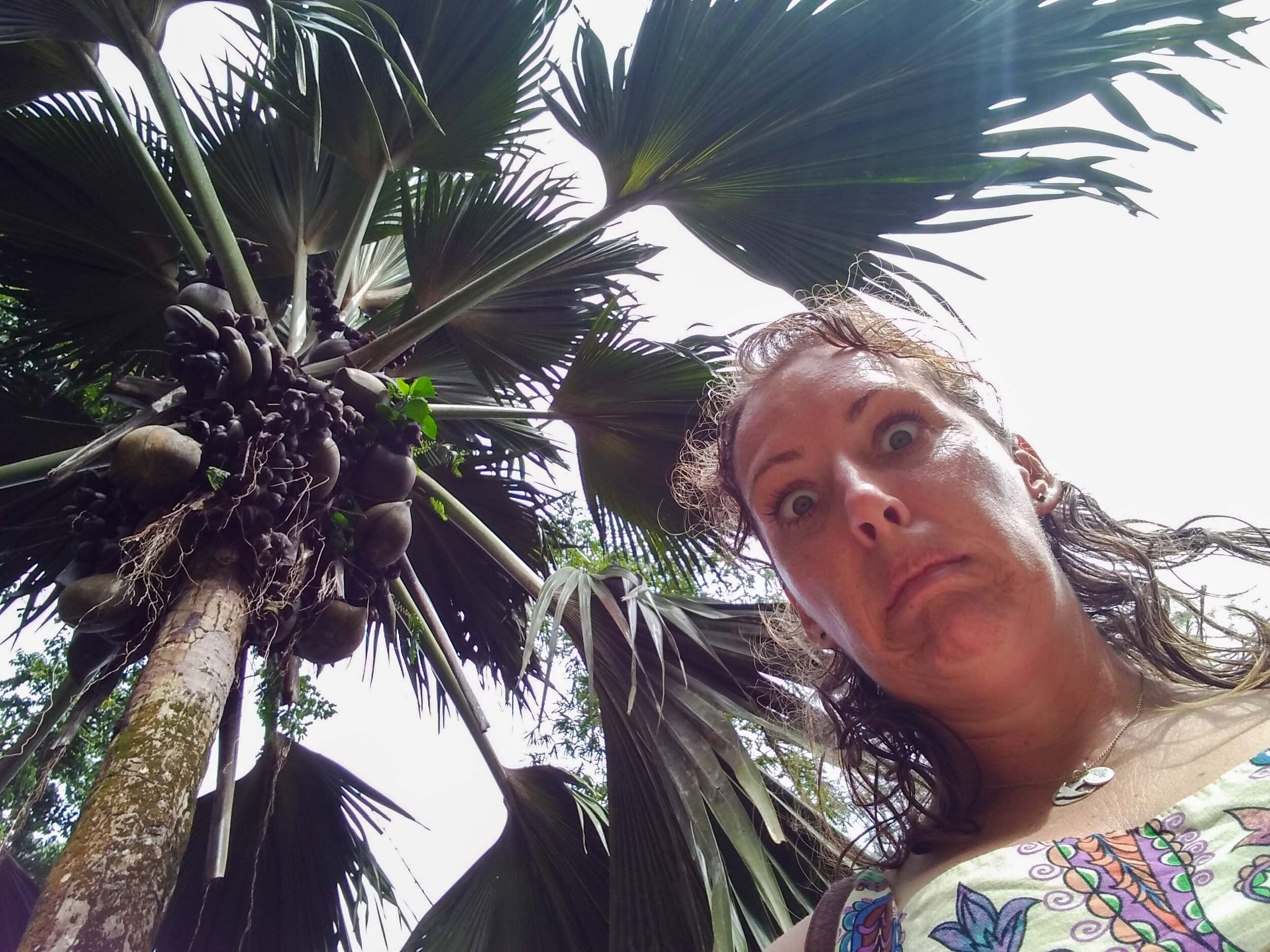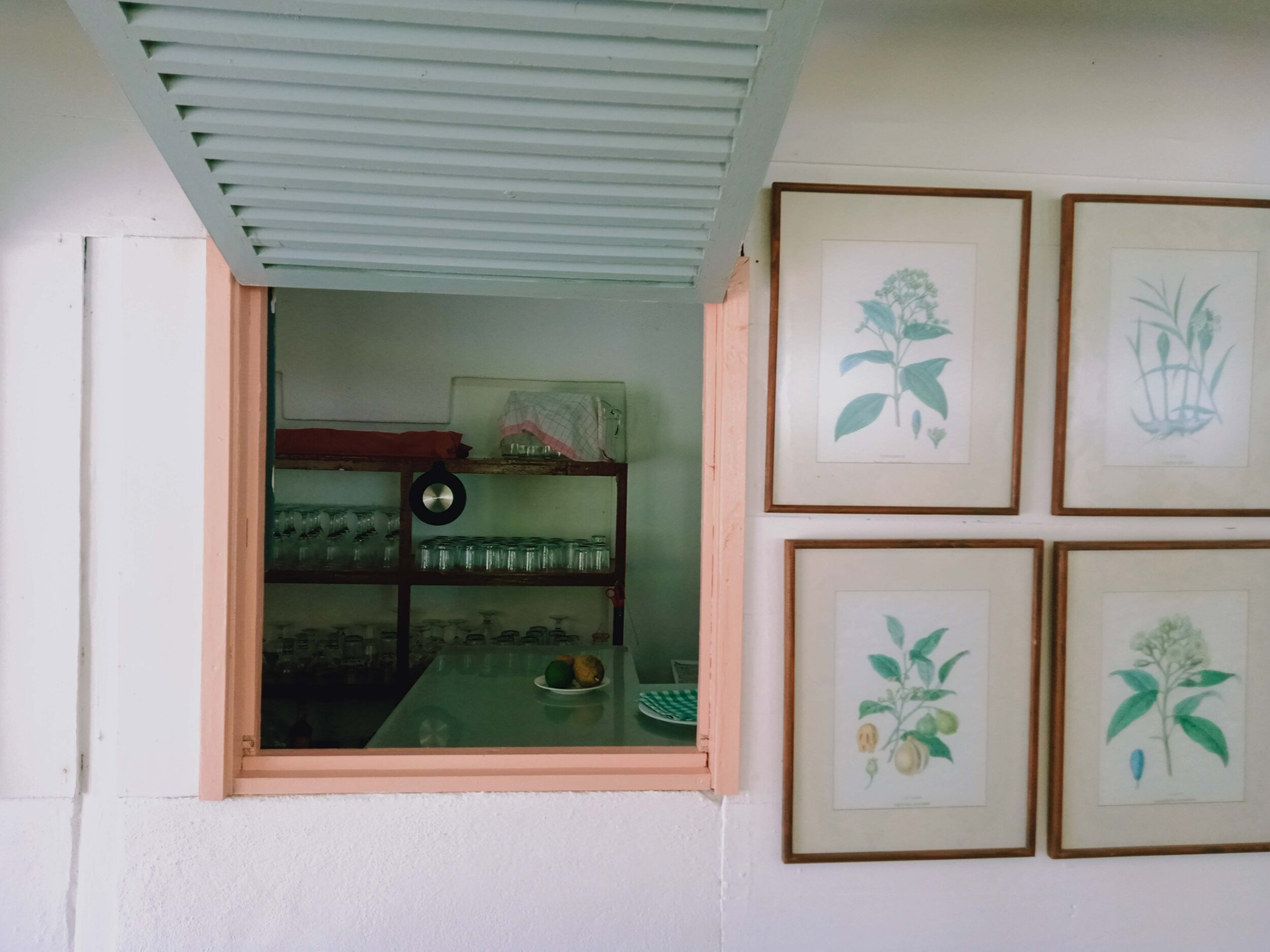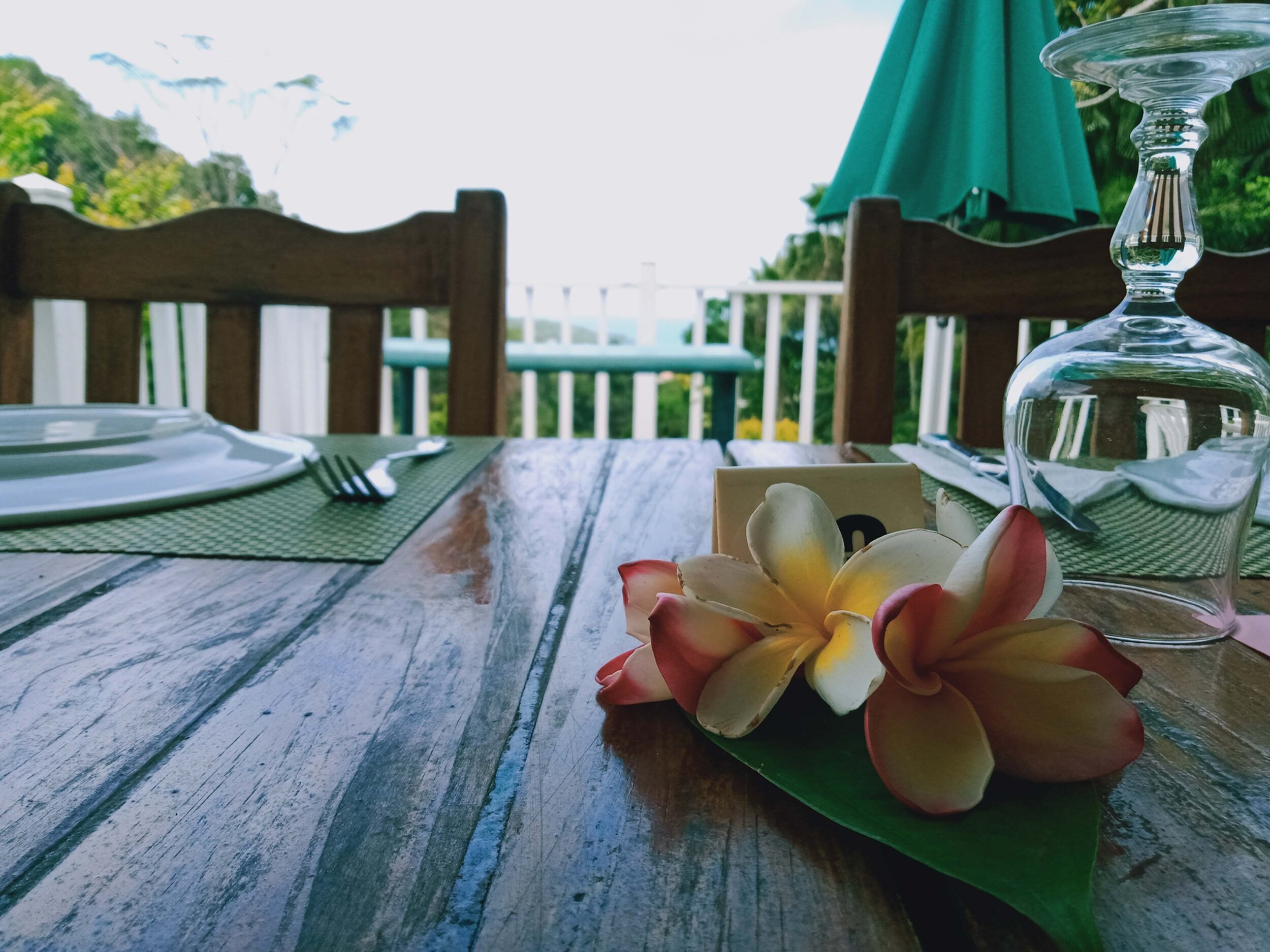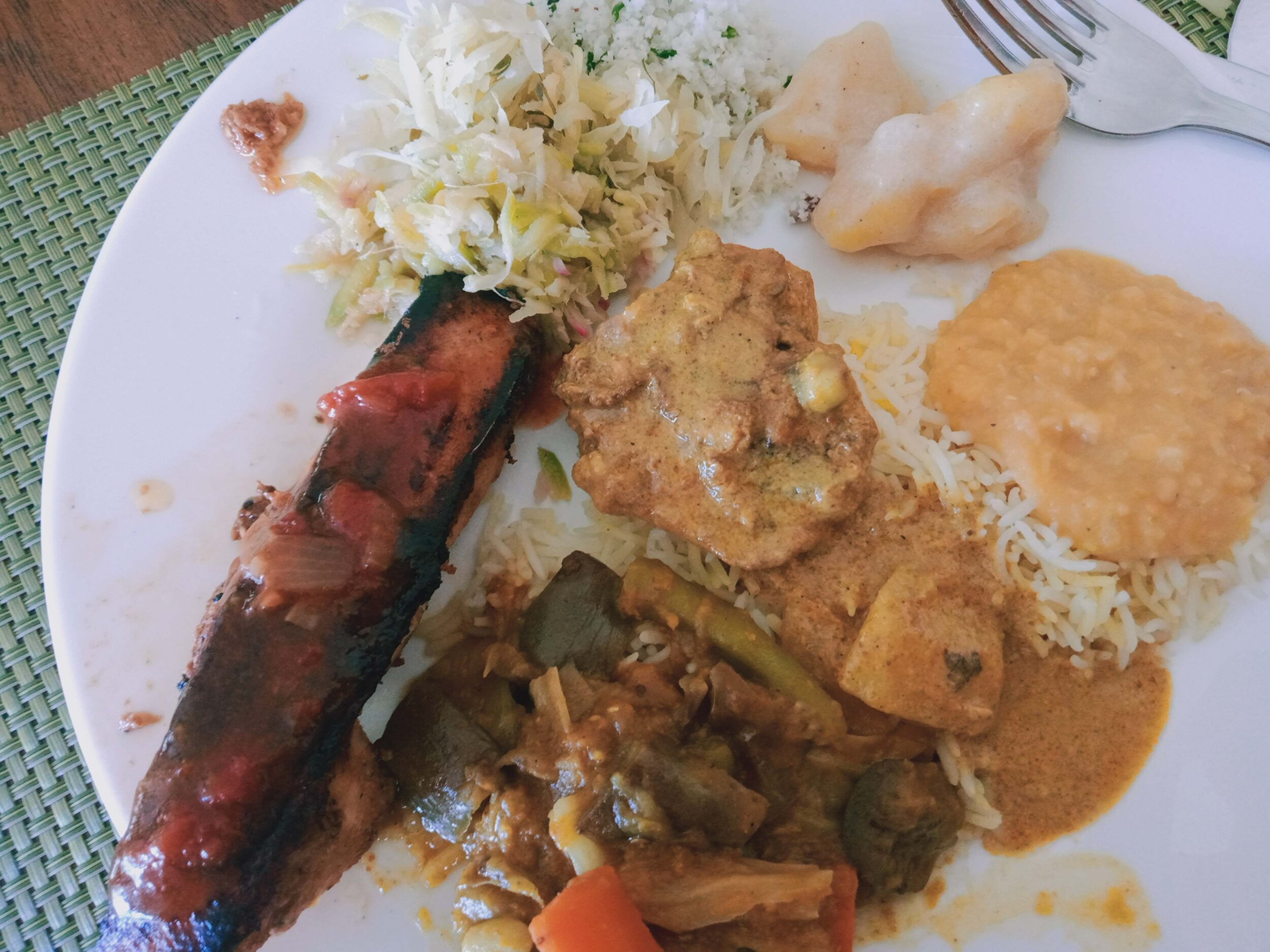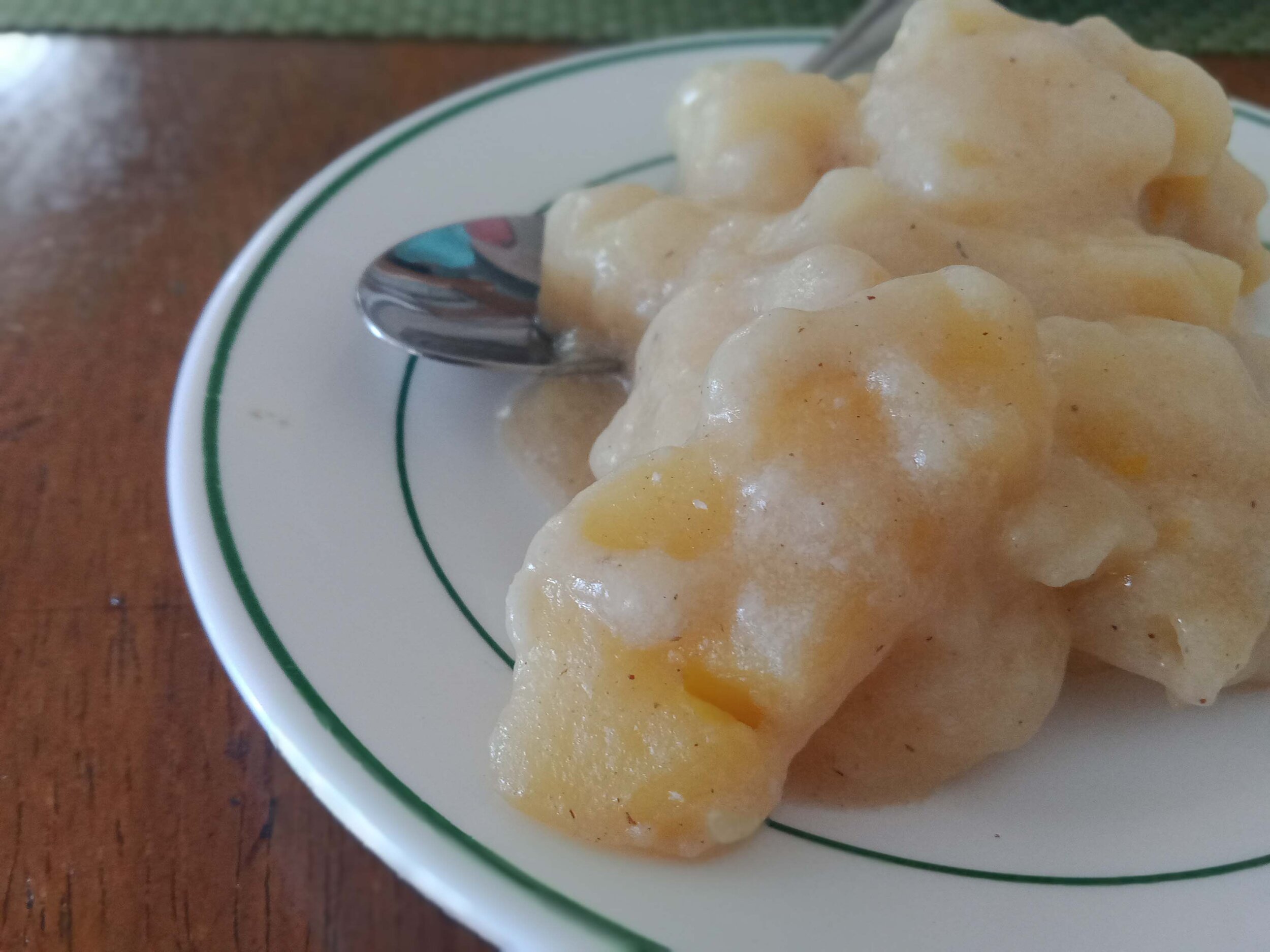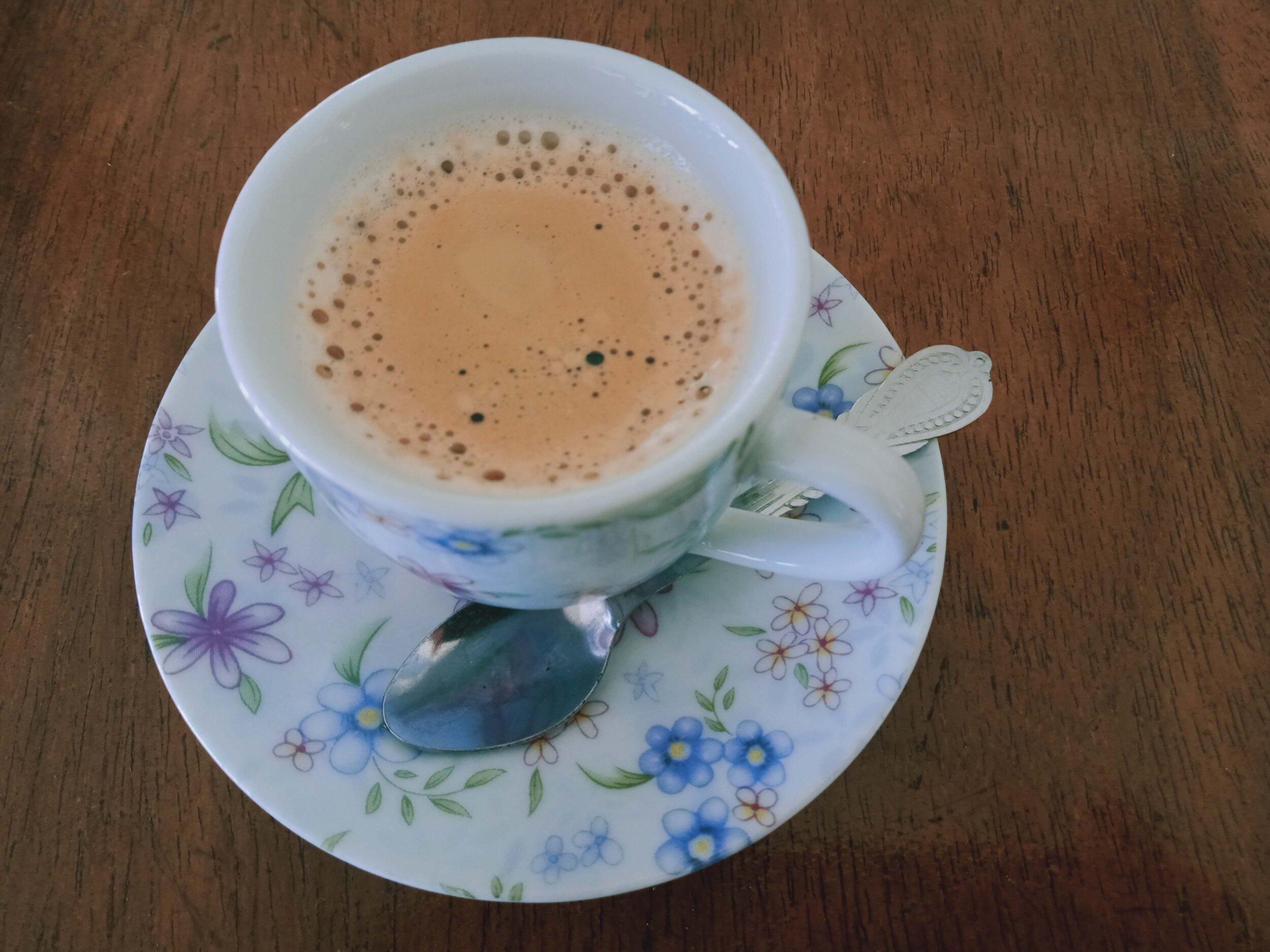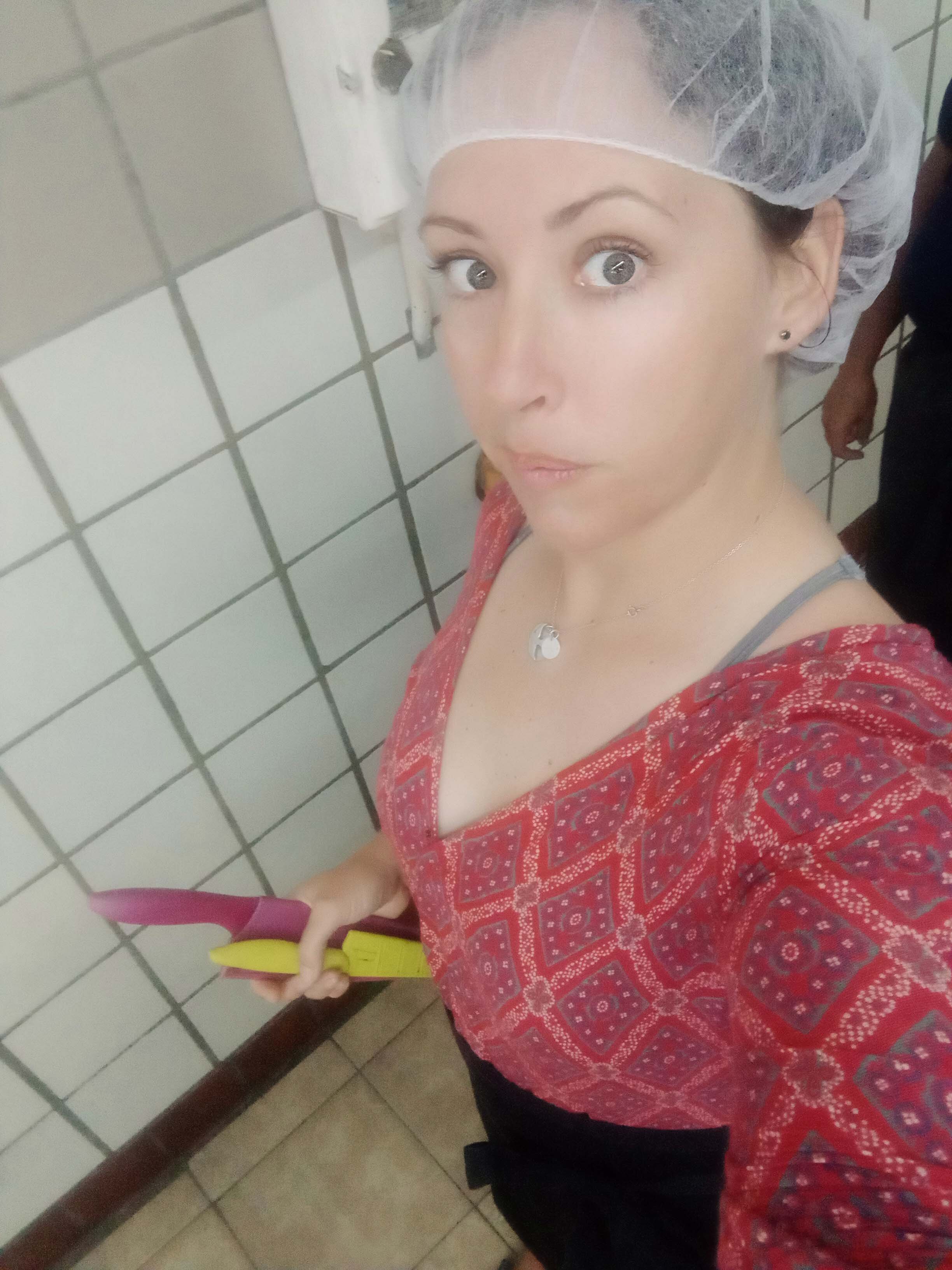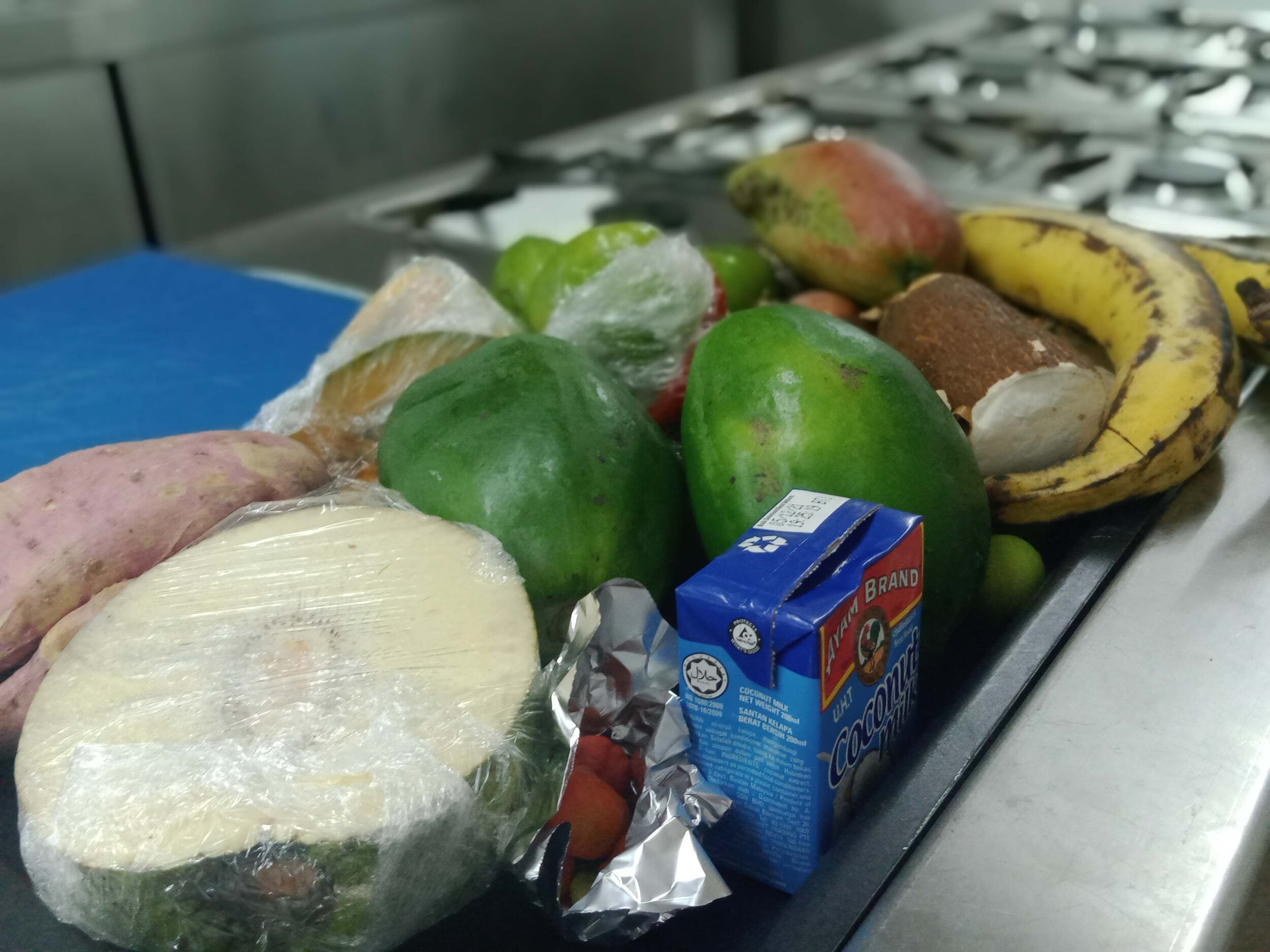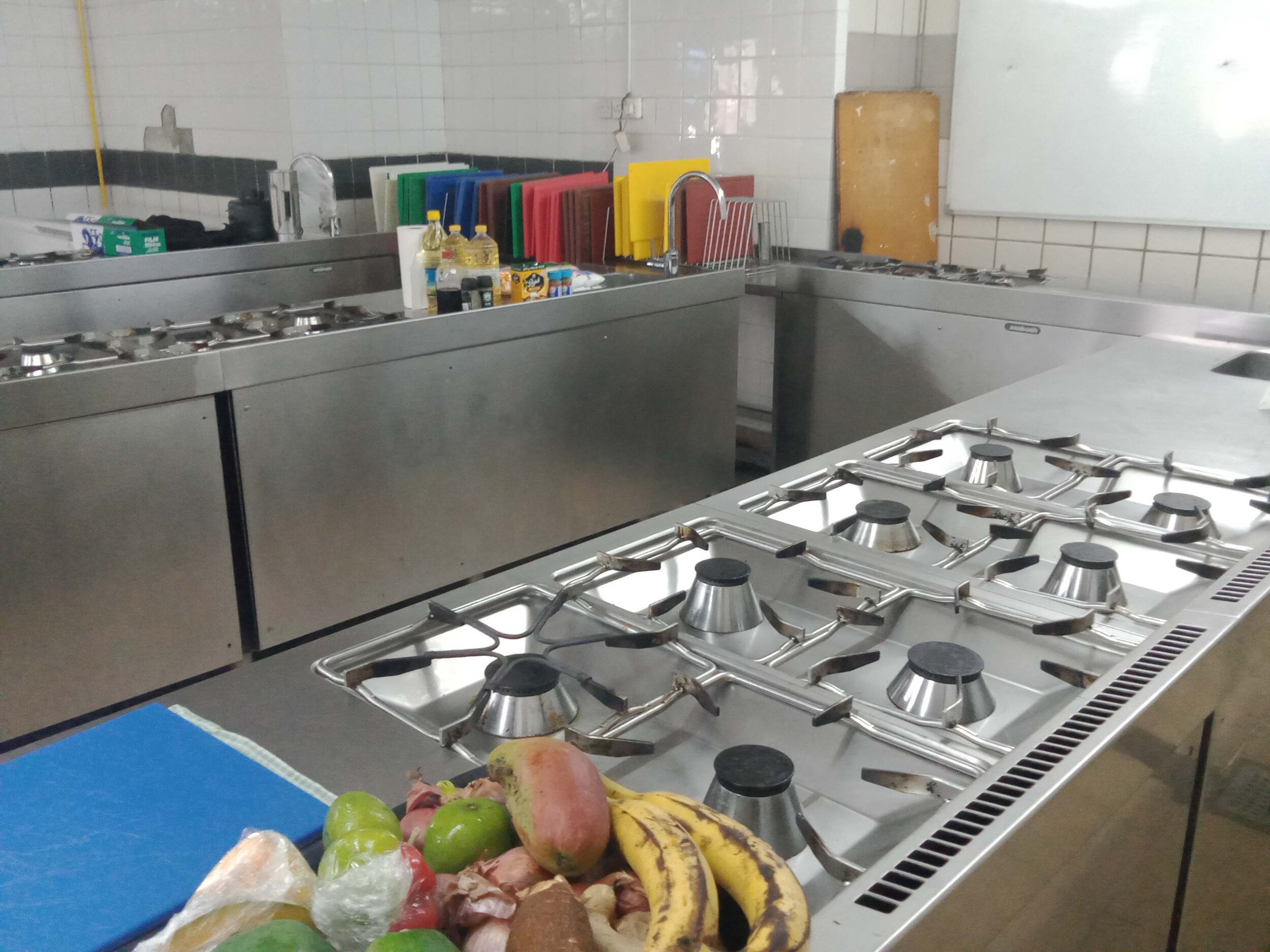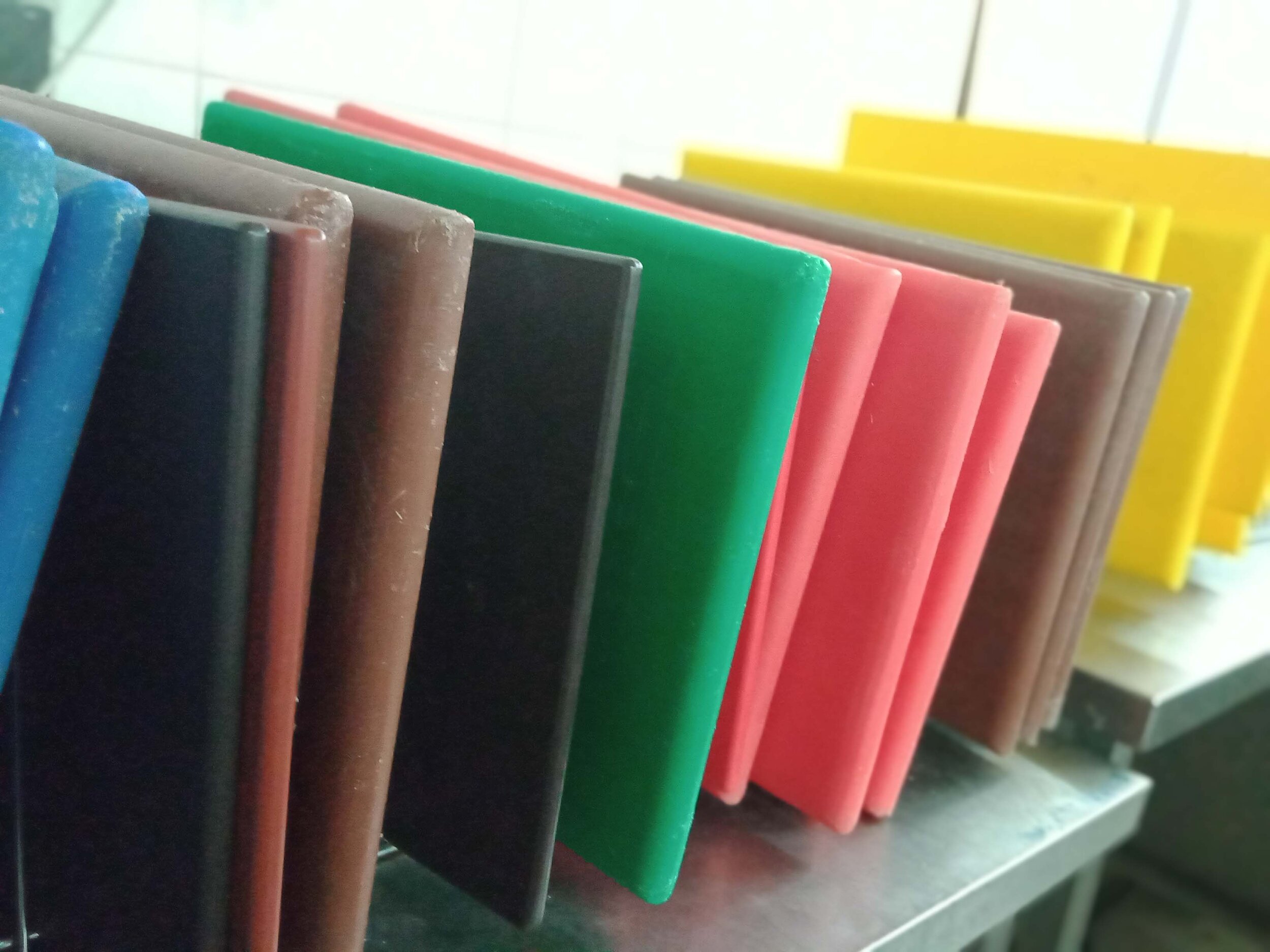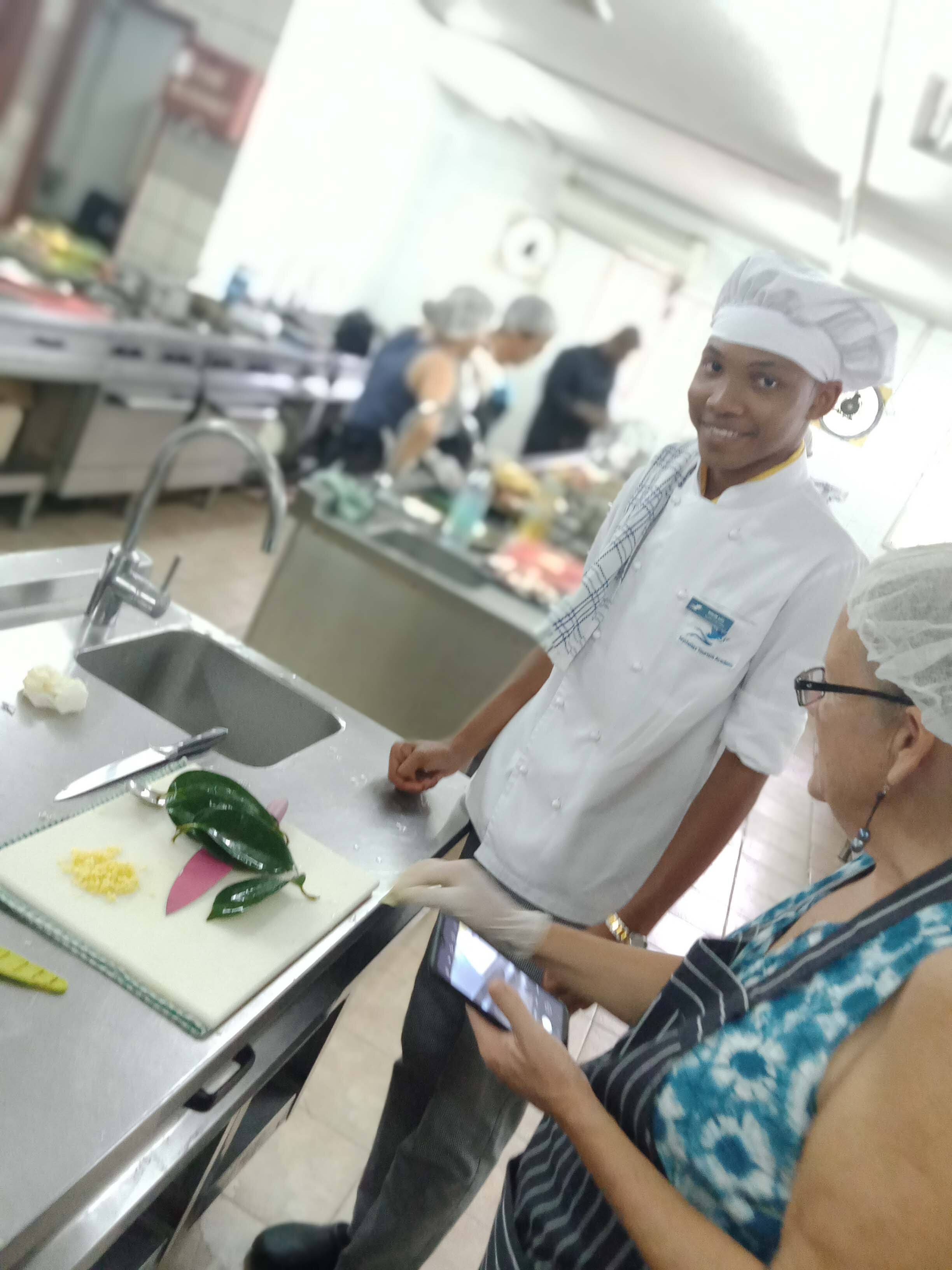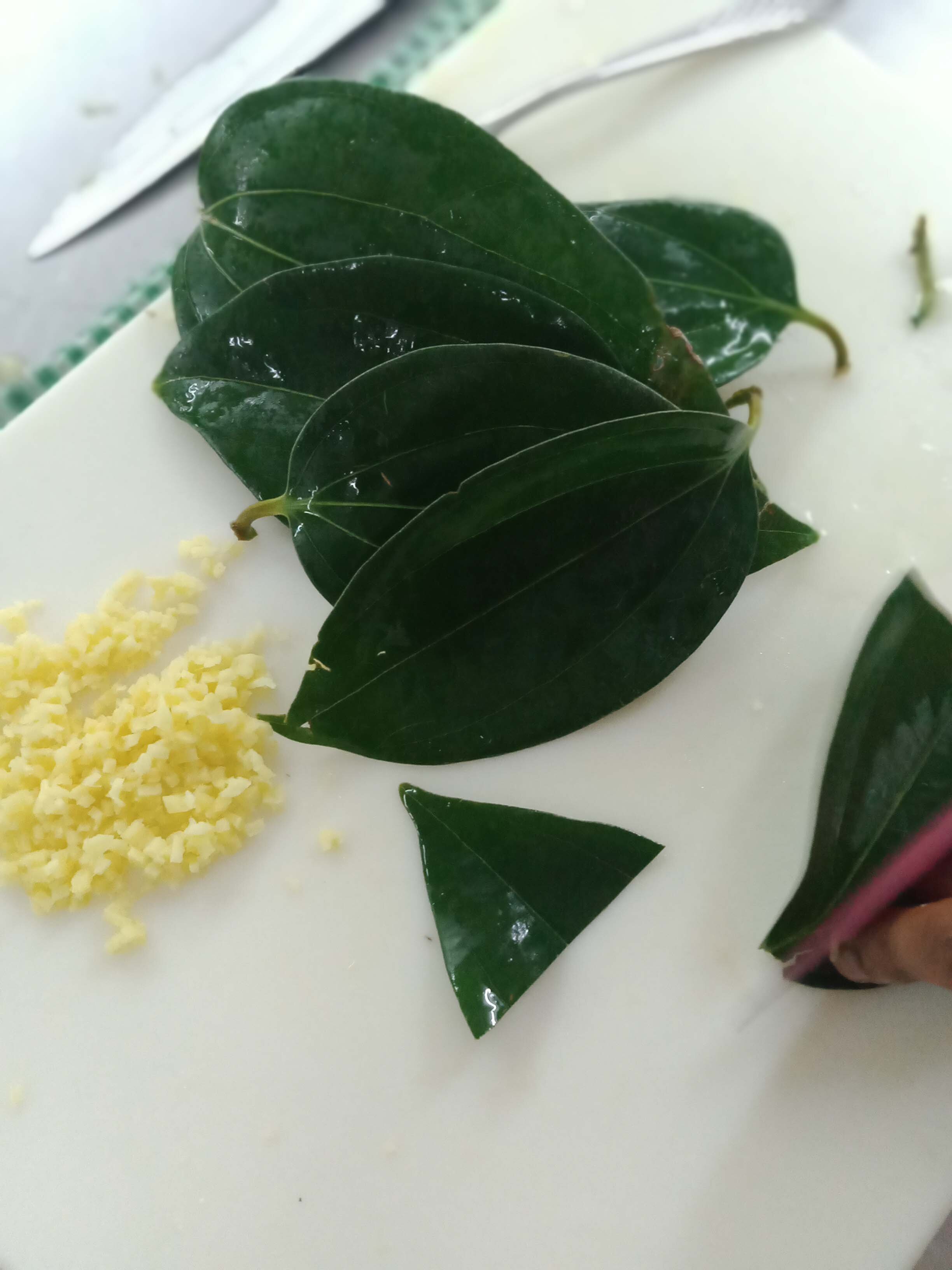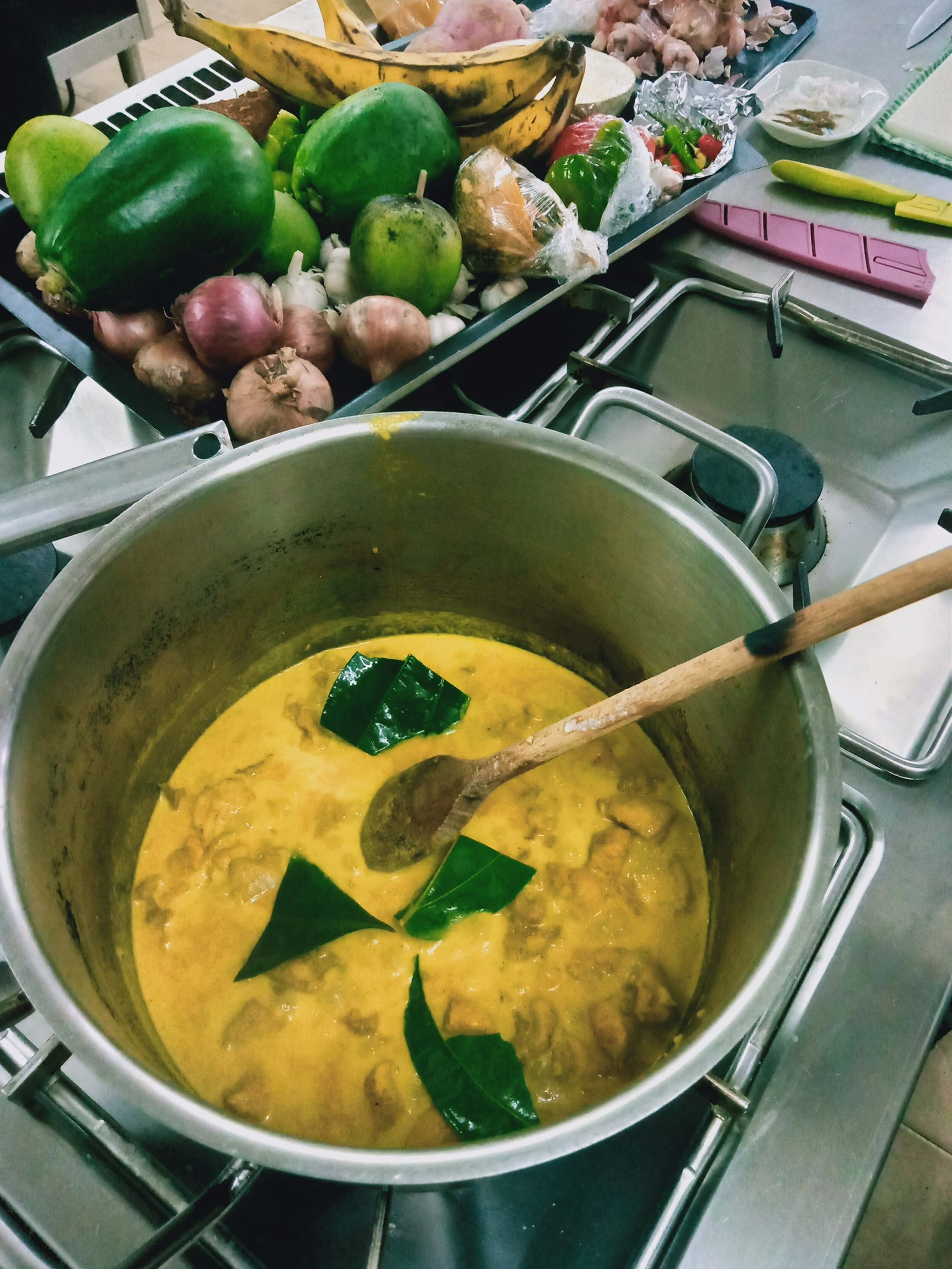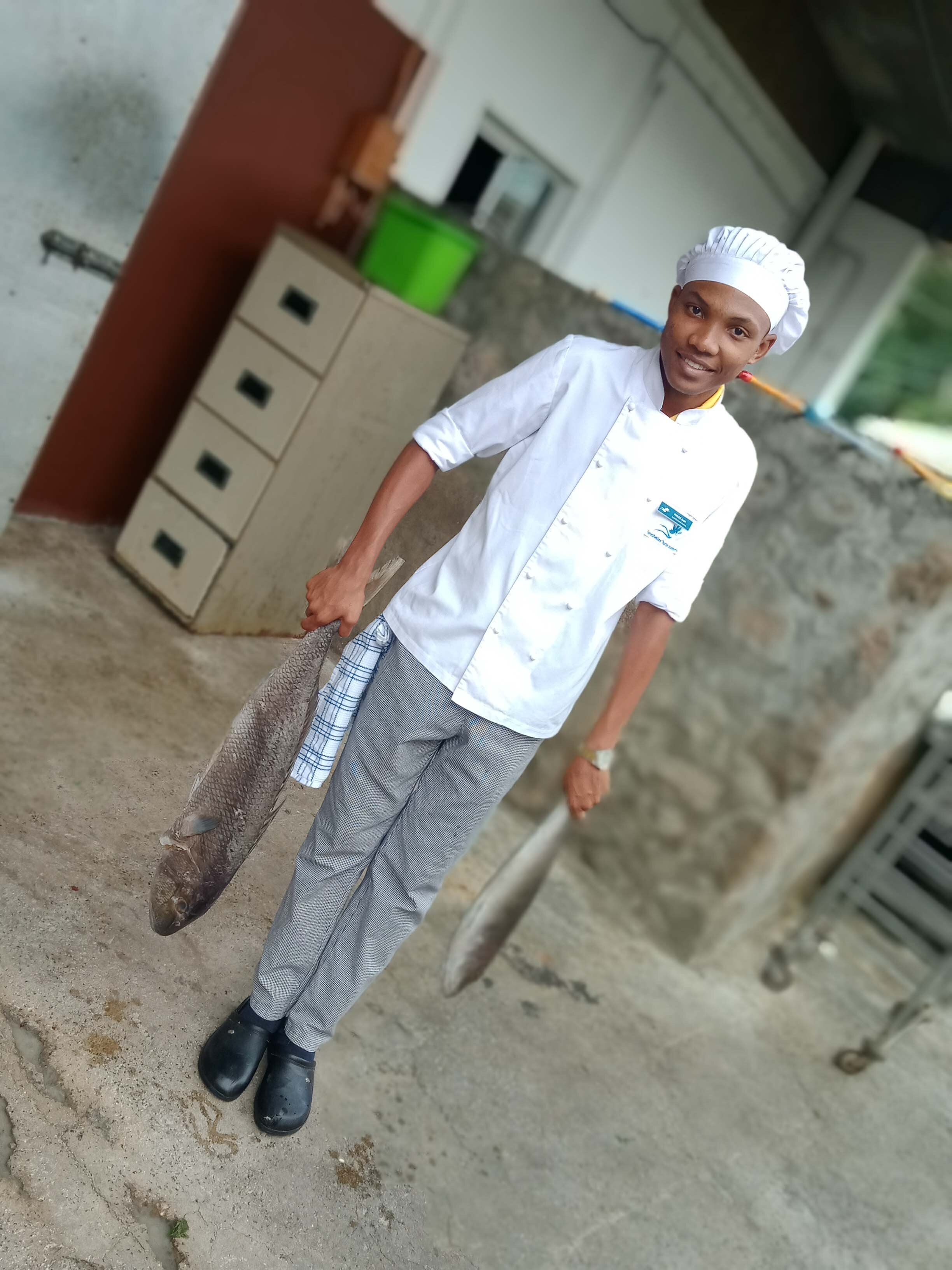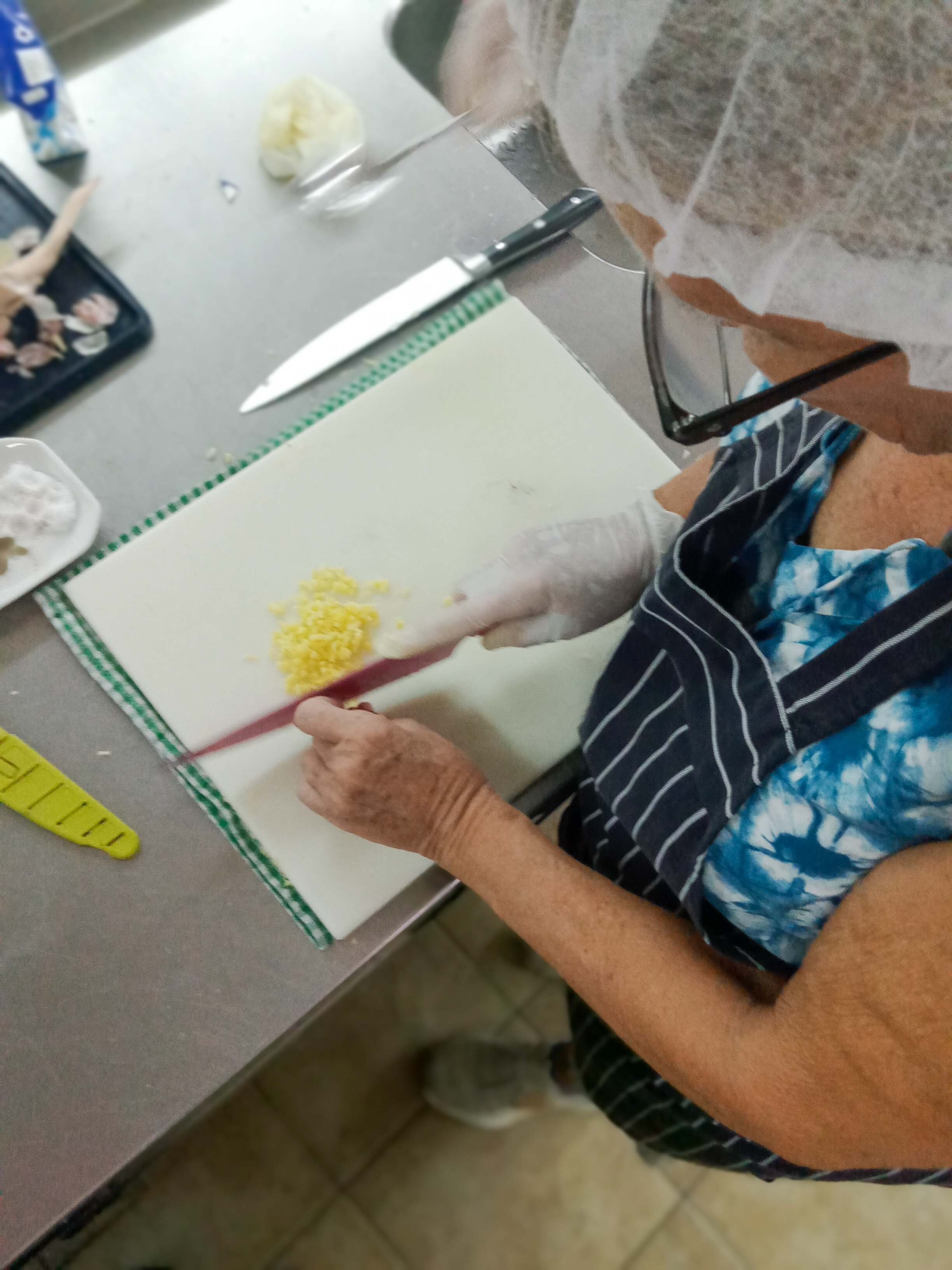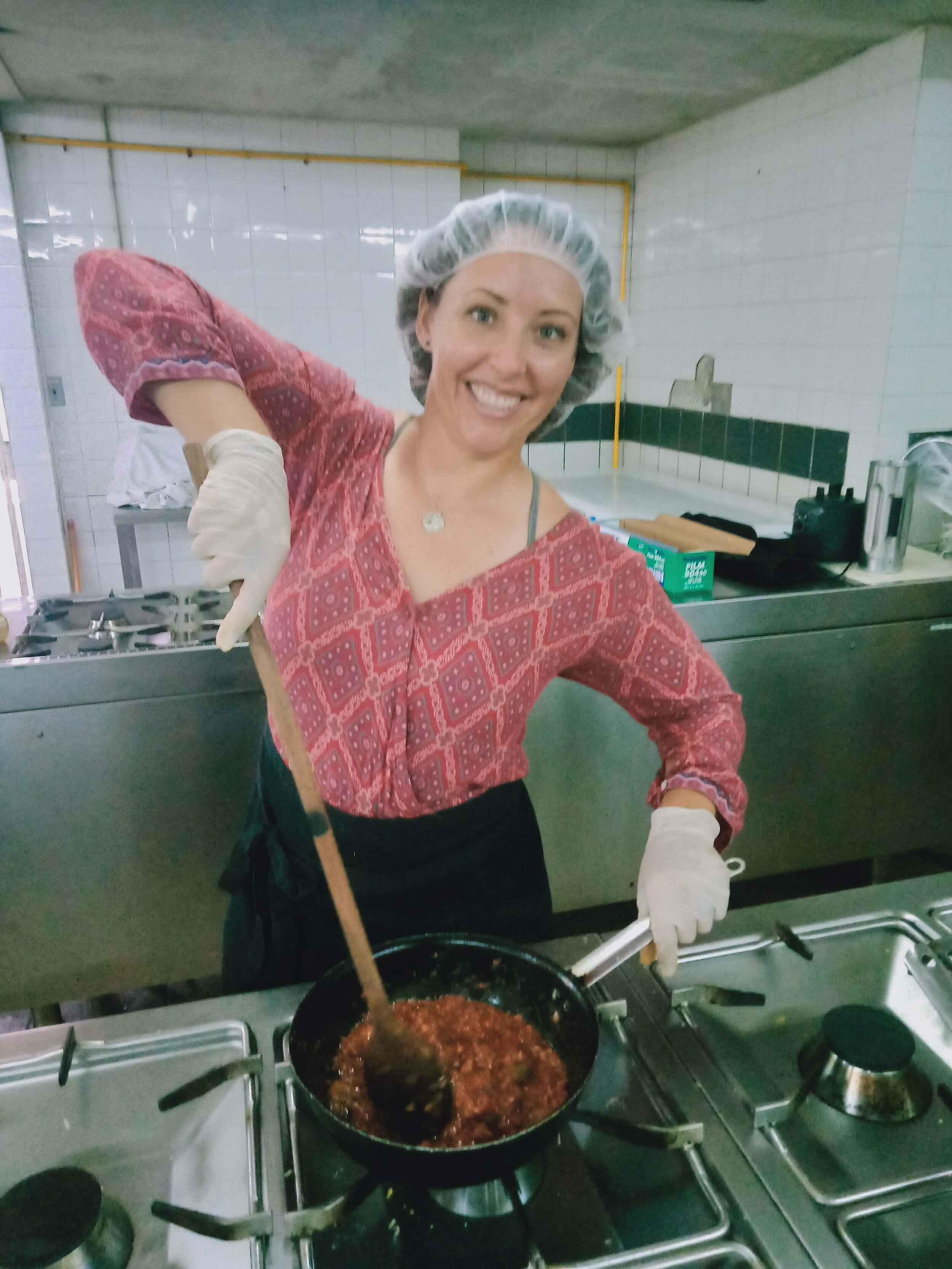In normal times, we cast upon a new shore and immediately get to exploring. usually, we don't have much time to waste, a sailor must sail on. With all this indecision and uncertainty playing into our lives, I find it hard to focus on exploration. It seems out of context and strange to do. I don’t feel like I know where to start with many of the normal opportunities for exploration closed down (the botanical gardens, the rum distillery...
We are relieved when a group of our sailing friends who are planning to shove off to South Africa get the ball moving for us and arrange two events that allow the whole fleet of sailors to enjoy a sliver of the Seychelles.
“Meet on the parking garage by the Marina at 10:00 a.m. We will walk through the gardens for a couple hours before hand, and then we will sit down for a traditional lunch.” This is the message we received from Janneka aboard S/V Anna Caroline, who often becomes our Sailing Fleet Adventure Leader. “You must wear a mask in the van to and from our destination.”
The morning of our adventure, we dress up and tuck two fresh blue surgical masks into our packs. We slip the rubber bands over our ears as we line up at the van to have our temperatures taken and disinfectant sprayed on our hands. The mood is cheerful, if muffled by masks on a ride that seems like we are heading toward the moon. The van swerves along narrow roads and groans with effort as we climb straight up the side of a Seychelles trademark granite cliff.
We arrive on the grounds of a beautiful home perched at the top of a ridgeline. An open air patio and dining room overlook a gorgeous view of sea, sky, and jungle.
Trails around the property give us a selection of beautiful flowers...
botanical plants for making extracts and makeup...
Seychelles endemic giant tortoise...
and, last but not least, our very first sighting of the largest (and most obscene looking) coconut in the whole world: The Coco De Mere or as translated in English “The Coconut of the Sea.”
The Coco De Mere is beloved here in the Seychelles, a symbol that captures the mystery and playfulness of these beautiful islands. The women wear silver pendants shaped like them around their necks, and the passport stamp on our visa is in the same shape. But why?
This strange looking Coconut (which can weigh up to sixty pounds!) was the first evidence the world ever saw that the Seychelles islands existed. Long before anyone knew these islands were here, these giant coconuts would float along the currents of the Indian Ocean to arrive in Sumatra, Indonesia, India, Sri Lanka, or the East Coast of Africa. The people who would find these coconuts washed up on their beaches had never seen anything like it before, none of their islands had trees that produced coconuts this large! (They live only in the Seychelles!) Having no idea where they could have come from, ancient people decided they must be grown from the sea. And so, they were named “Coconut of the Sea.” It was only later, as sailors arrived on the Seychelles shorelines, that all of humanity learned the Coconut of the Sea actually grows here, like the giant tortoises, larger than life.
For most of history, the Seychelles were uninhabited by humans. Some scholars assume that Malay, Maldivian, and Arab sea traders were likely the first to visit the Seychelles, but the earliest recorded sighting wasn’t until March of 1503 by a Portuguese Armada. They did not stop here, though, and the earliest recorded landing wasn’t until 1609 by the British. The French claimed the islands in 1756 and the islands were named after Jean Moreau de Sechelles, a French Minister of Finance under Louis XV. After that time, the islands were used as a trading post for the whaling and slave trade industries until the British arrived and demanded the islands be handed over in 1794. Thus the population of the Seychelles began with a handful of French and British people along with a larger population of African, Madagasese, and Indian people brought here as slaves. And, as this mix tended to do in other places of the world food, music, language, and culture all blended together to the unique form of “Kreole” that exists here today. The word “Kreole” or sometimes spelled “Creole” literally means “a mix of African and European influence or descent.”
We were the beneficiaries of this mixture for lunch on this particular day. We sat down to a decadent meal that included baked fish with creole sauce, chicken curry in Seychelles specific blend of spices, several types of chutney, rice, smoked fish and mango salad. For dessert, bananas in coconut milk paired with a lovely espresso. Yum, yum!
But what good does it do me to just eat Creole food?! "We need to learn how to make these dishes!” I say to Andrew. He agrees, and as luck would have it, it was only a couple days later when Janneke arranged a second adventure for fifteen lucky sailors: Creole cooking class. Andrew volunteers me to go while he stays aboard Sonrisa hunting down leaks like a blood hound and varnishing trim.
This time, we weave around the narrow cliffside roads grouped up in various sailors’ rental cars to arrive at a school used to train Seychellois men and women in the hospitality and cooking trade to work in the hospitality industry that has grown so strong here in recent years. Rows of professional cooking stoves are lined up with cutting boards, pots and pans, and all the ingredients we need to make each of the Seychelles traditional dishes.
I’m paired with our Suspected-Retired-CIA friend as my teammate, and she very quickly admonishes me to keep our secret recipes only in that “Need-To-Know” circle of friends, subject to passage of security clearance.
She has her eye on you.
We start with a chicken curry, and we quickly find most dishes start with a base of diced red onion, minced ginger, and garlic. We toss these three ingredients into a puddle of coconut oil waving with the mirage of oil and heat. They splatter and wafts of the most delicious smell rise on clouds of steam from our pot. Once the oil is well flavored, we toss in diced, de-boned chicken cubes and stir them around until their edges have a nice sear. From here, we add Seychellois curry powder mix, tumeric powder, and coconut milk. We stir this up, bring the heat to low and get ready to add the secret ingredient.
Cinnamon Leaf.
“You mean cinnamon stick, right?”
No, I mean cinnamon leaf!
Our assistant professor leaves his post beside our stove for a moment or two to return with a handful of dark green, aromatic leaves from the cinnamon tree. I sniff and nibble at the edge of one leaf, finding its flavor being lighter, more floral, and quite an interesting difference from cinnamon stick itself.
“Wow!” I say.
We break up these leaves and toss them into the pot to simmer and stew like a bay leaf might in an Italian stew.
And this was just the start. We spent six hours that day learning to make new dishes that I like so much they will easily fit into our rotating repertoire for dinners. I particularly enjoy the marinated and baked white fish, topped with Creole sauce, and served with rice.
We slice slits into the fish flesh and pack them with a mixture of red onion, garlic, minced ginger and lime juice. We let that sit while we make the Creole sauce: sauteeing garlic, red onion, and ginger until aromatic, add diced red and green bell pepper, diced tomatoes, tomato paste, a touch of water, a pinch of salt, and a small amount of fresh thyme, and - you guessed it - more chili pepper. Once the sauce is ready, then in a new pan, we seared the fish brown on the outside and placed it in a baking dish to bake through in the oven. Perfection.
This dish is particularly nice served with a side of pumpkin chutney: boiled and salted pumpkin, mashed, then mixed with red onion, lime juice, chili pepper, salt and cracked black pepper.
Another favorite is a simple salad made of thinly julienned red and green bell peppers, slices of mango, and smoked marlin, tossed in olive oil, salt, chili pepper and lime juice.
For dessert, we learned to make bananas in coconut milk, and my new favorite thing I should never eat again for the rest of my life if I want to avoid dying in a diabetic coma....
...coconut nougat.
The coconut nougat is truly one of the best and worst things I have ever been offered. Sweet, nutty, rich, chewy, golden, and absolutely delicious, you basically boil a 1-1-1 ratio of freshly grated coconut, water, and sugar together with a splash of vanilla, a pinch of fresh nutmeg, and a pinch of orange or lemon zest until it reduces down and the sugar liquid caramelizes to a delicious golden brown. Pour this soft tack candy out onto the counter to let it cool, then cut it into pieces.
I ate five pieces.
Then, fell victim to a sugar crash.
I slept that off with a mid-afternoon nap, rallied for another two pieces, then suffered a sugar hangover all the next day.
You’ve been forewarned.
In the end, we all enjoyed a feast of epic proportions, each team of two chefs eating our own practice attempt at each dish. No one went home hungry!


